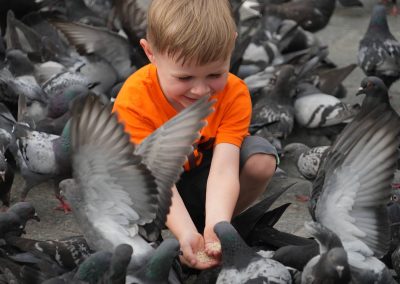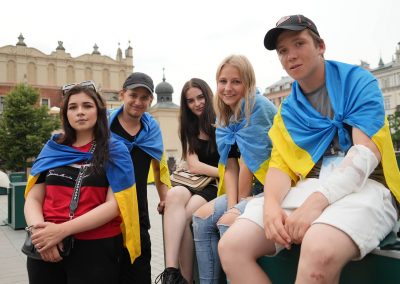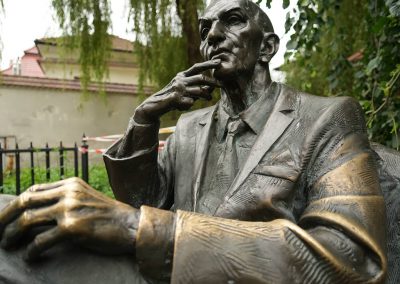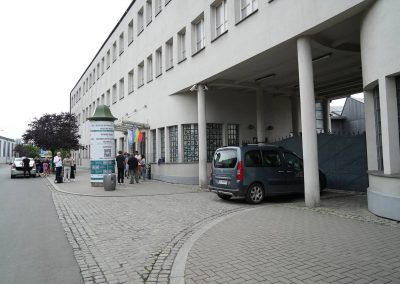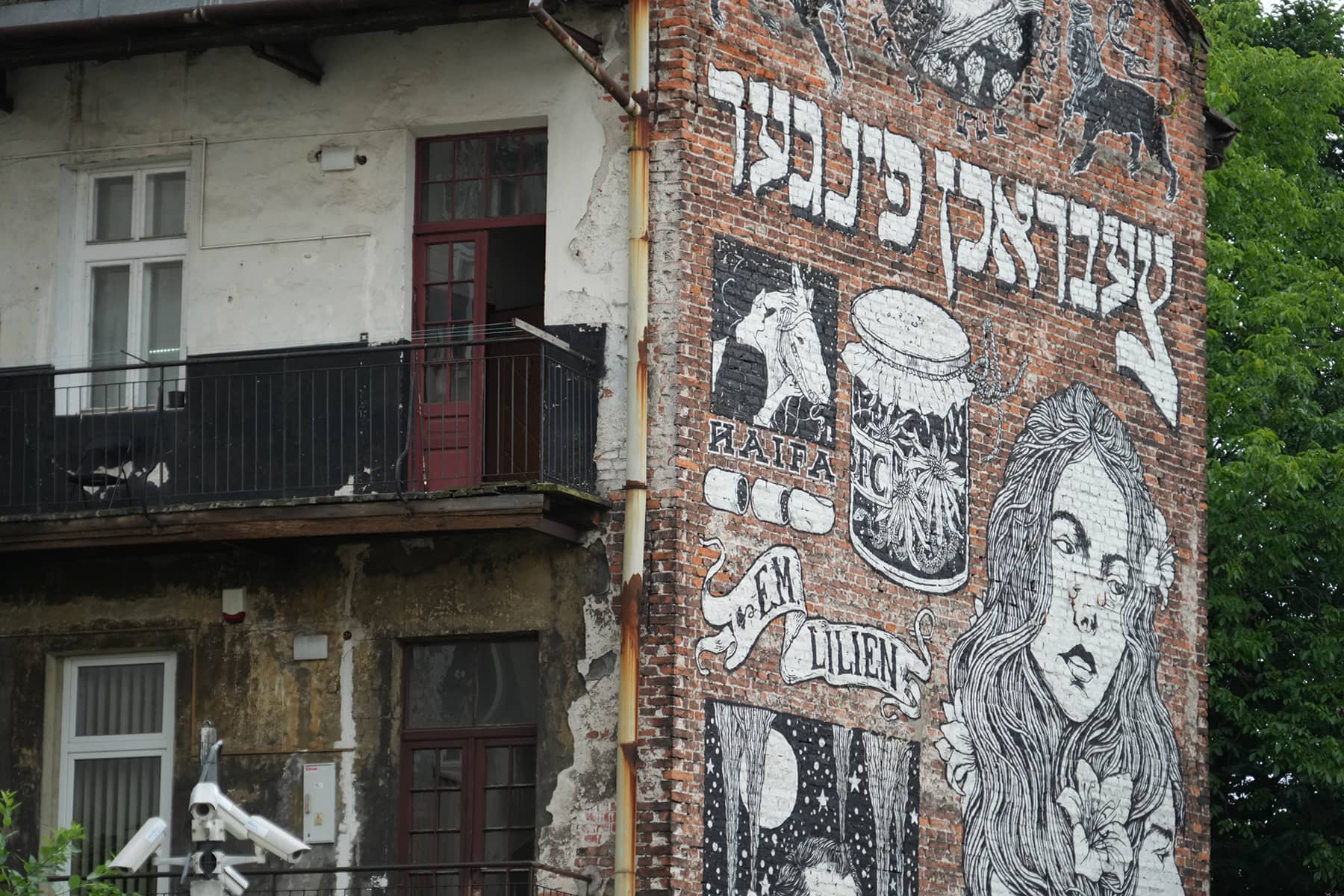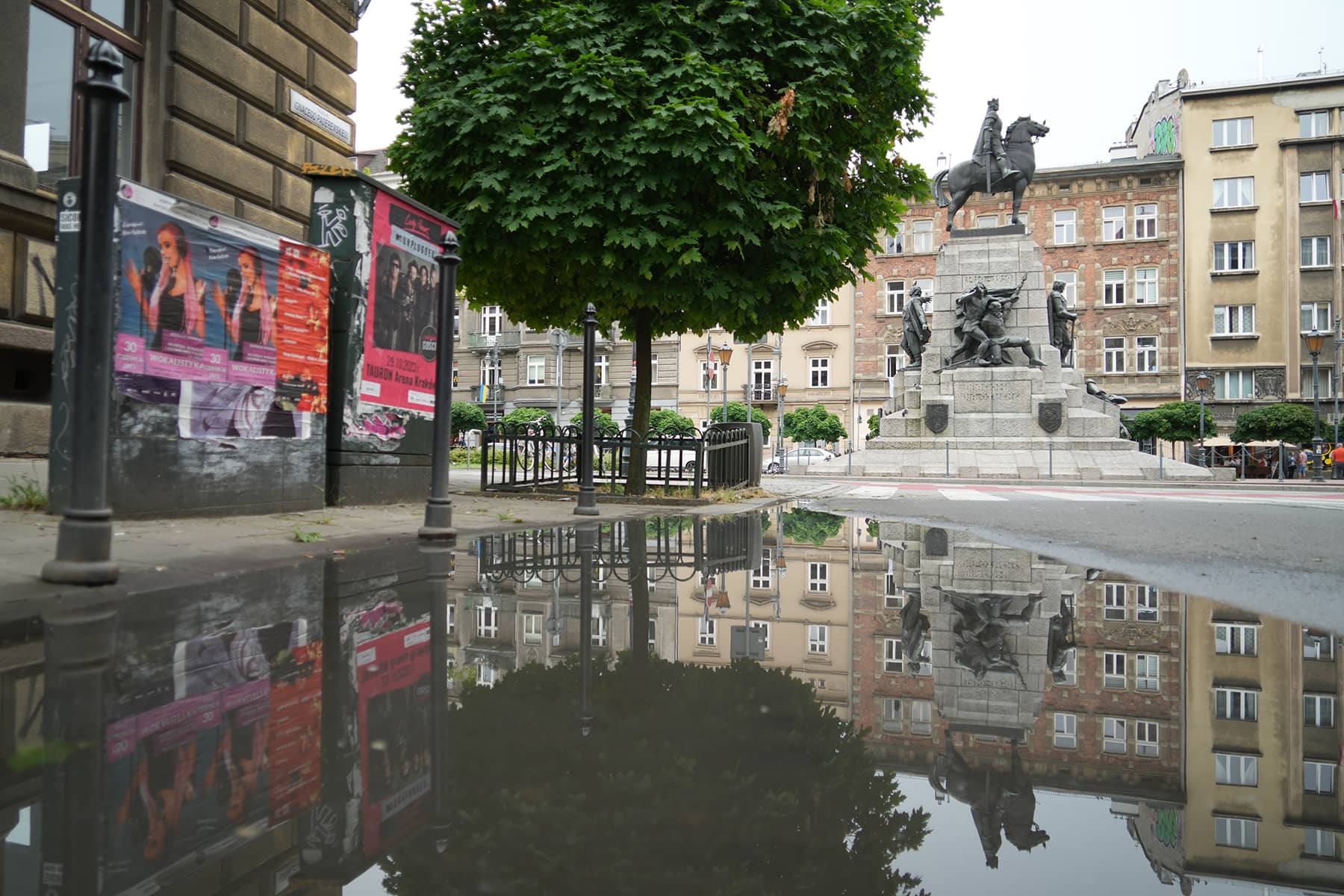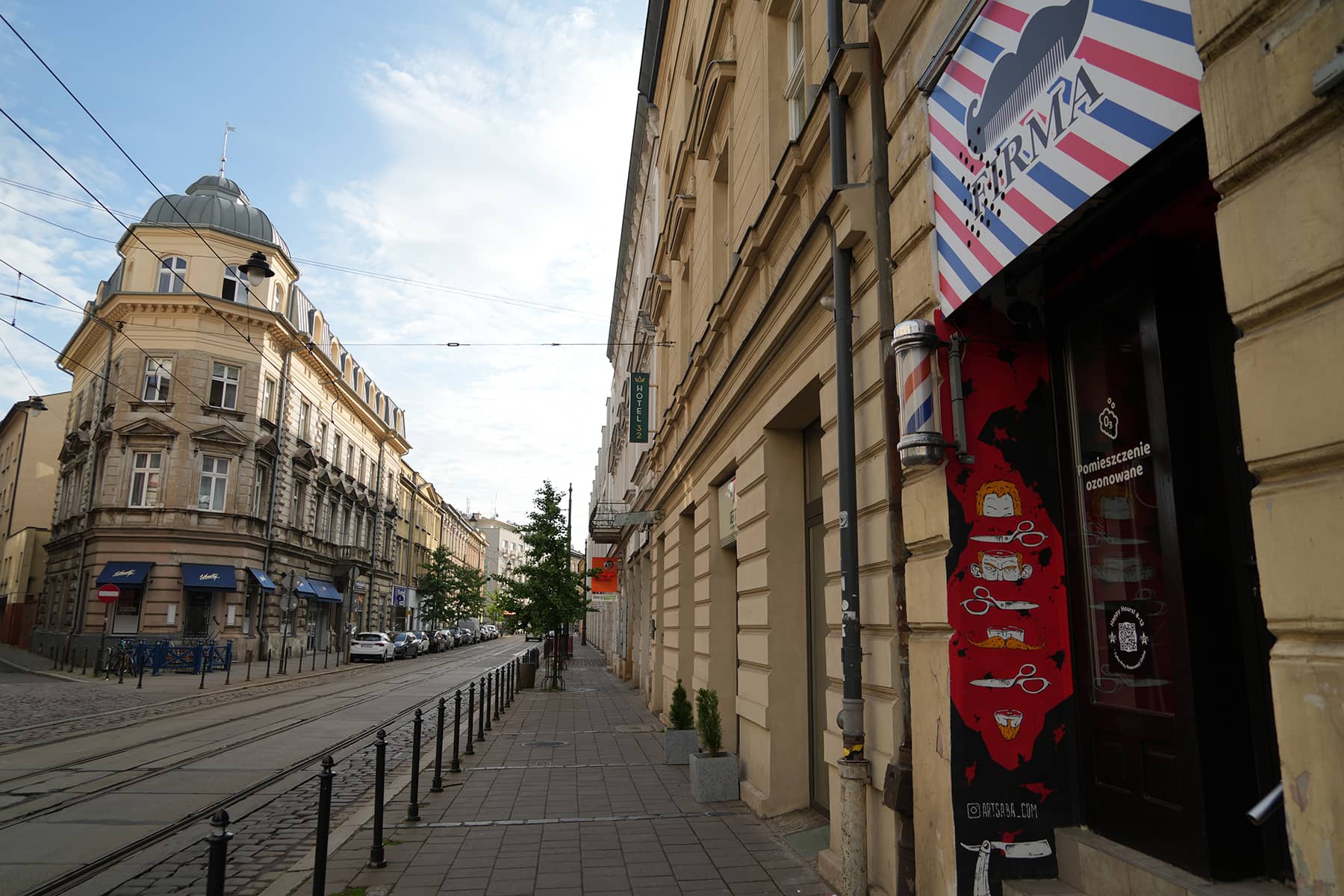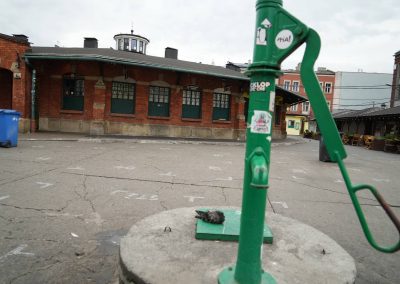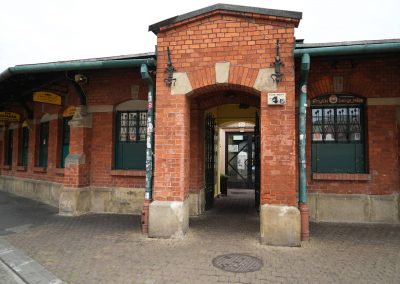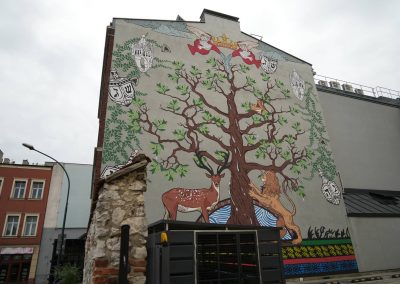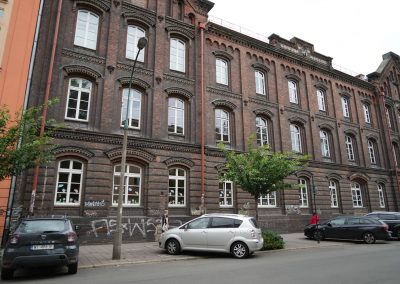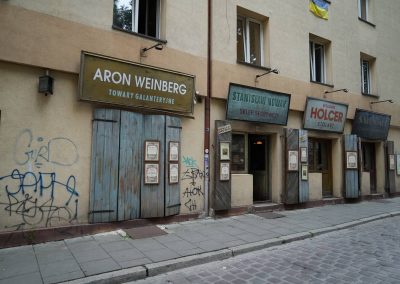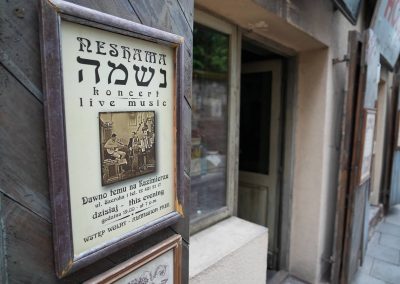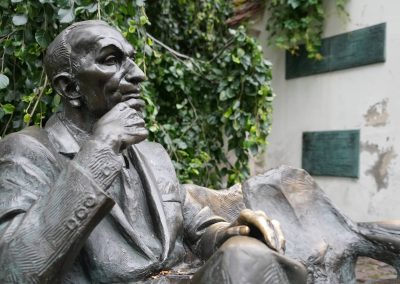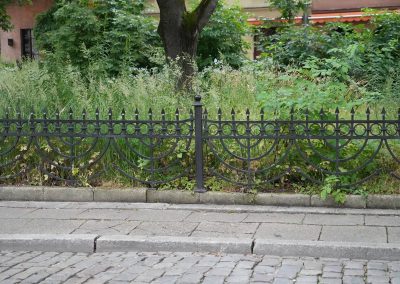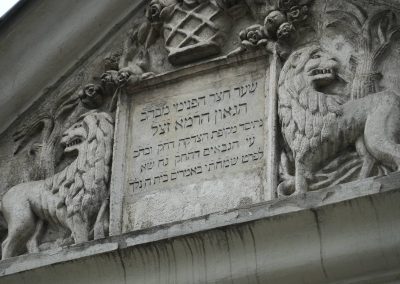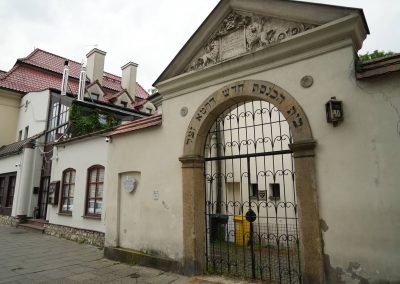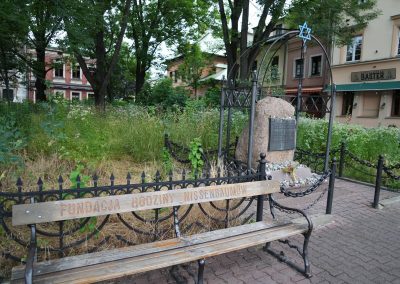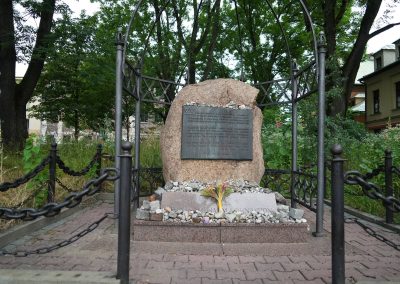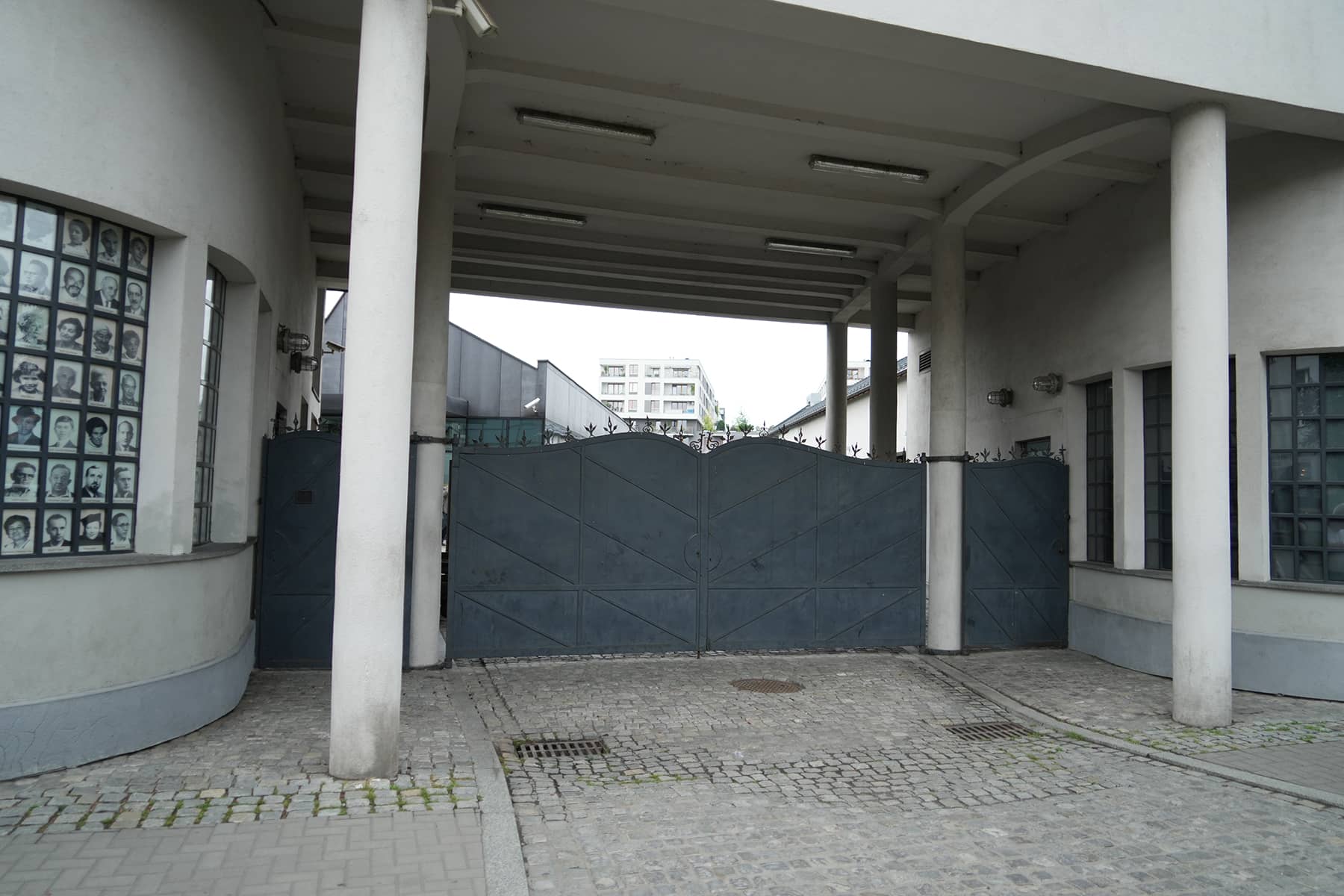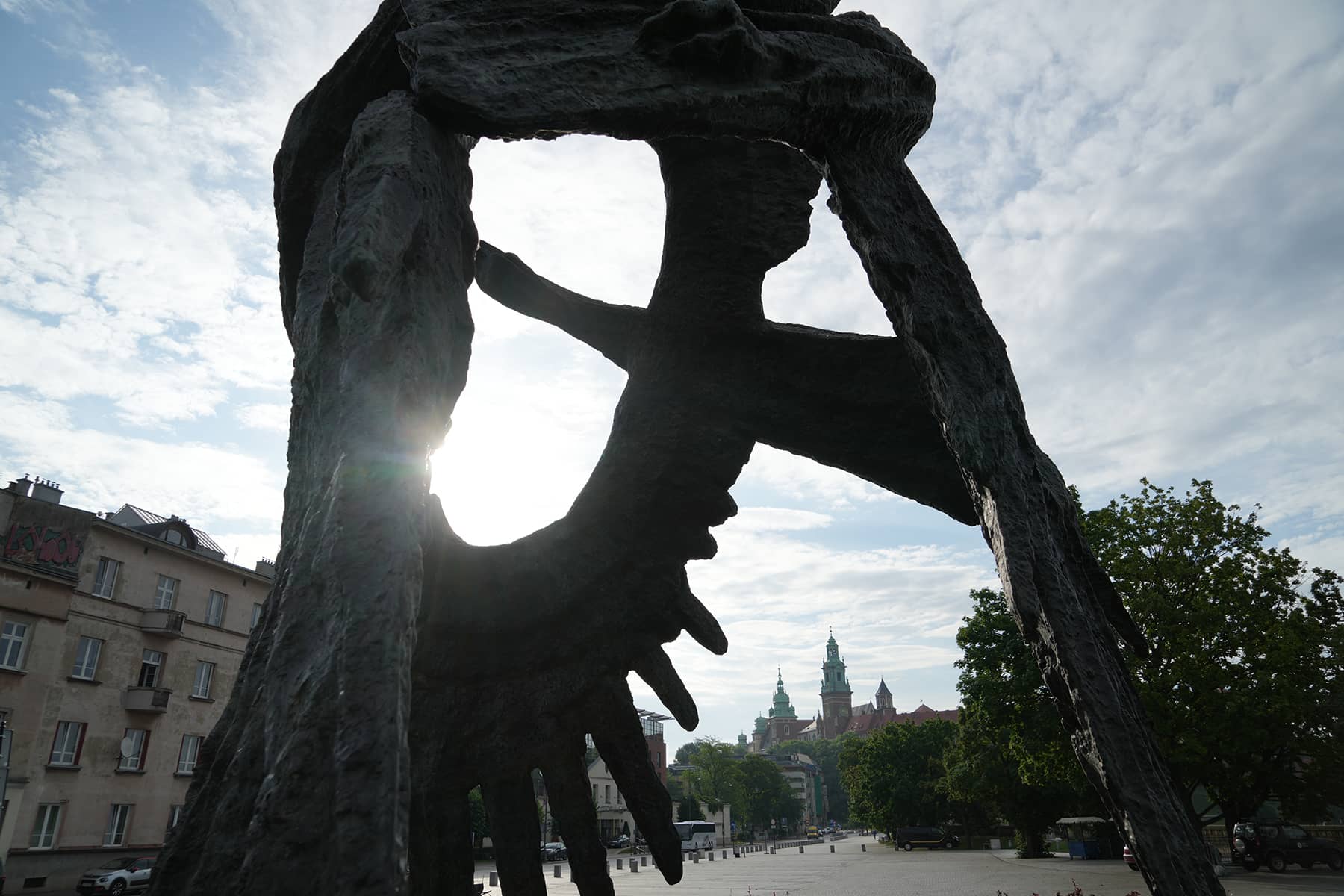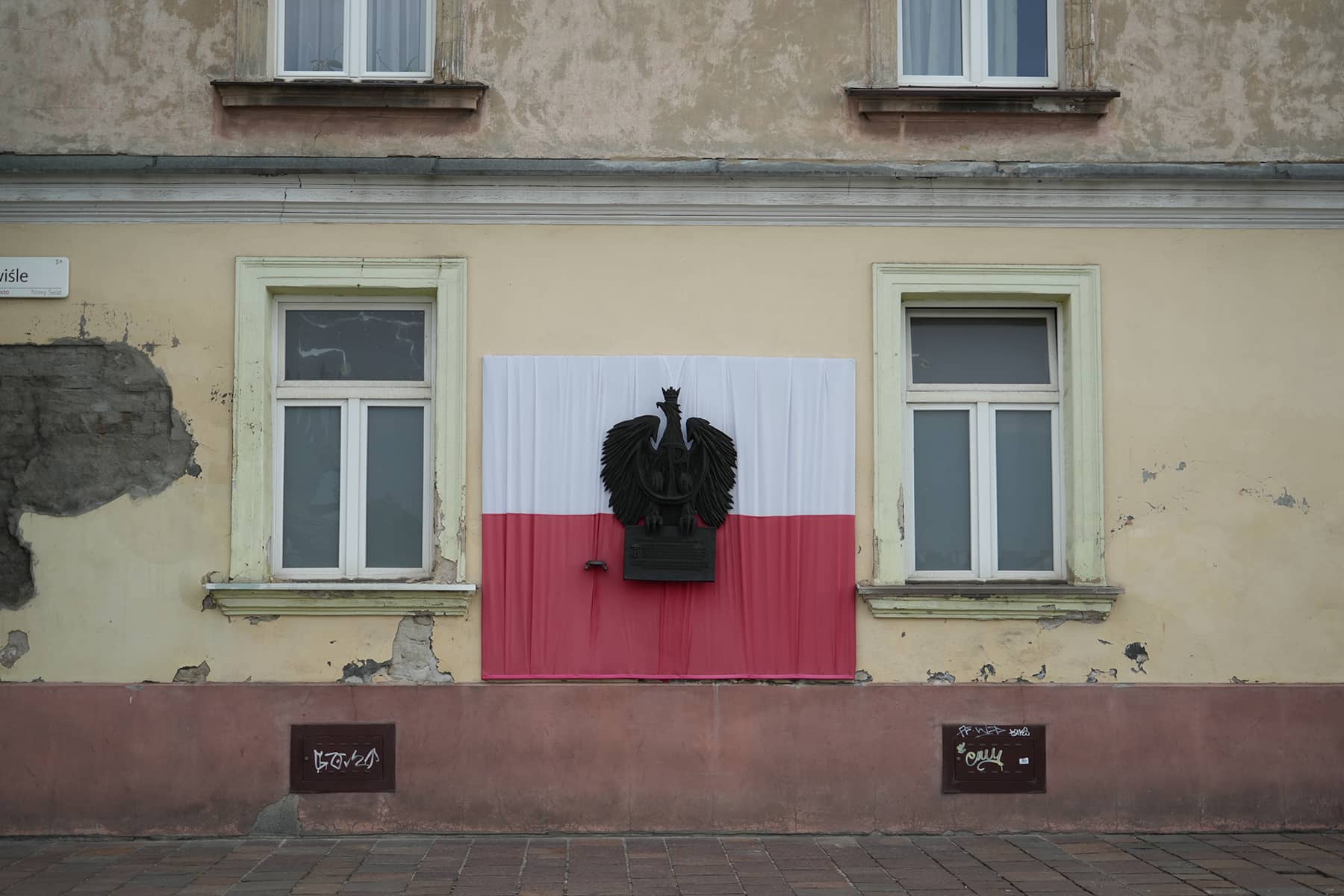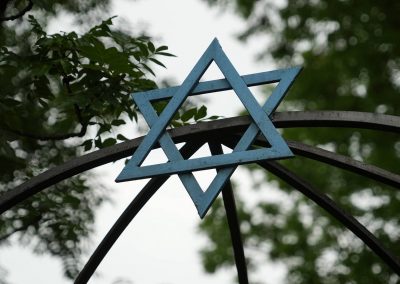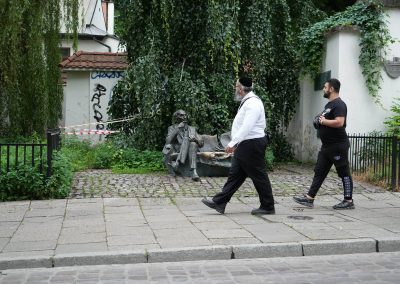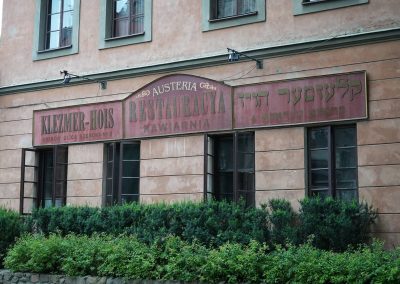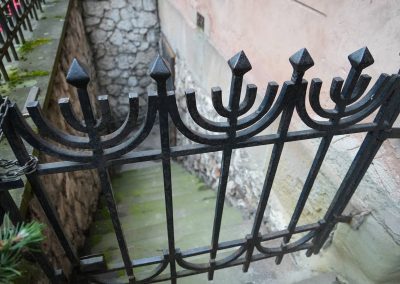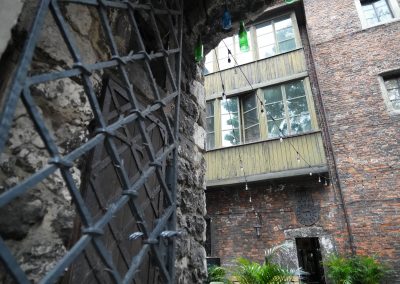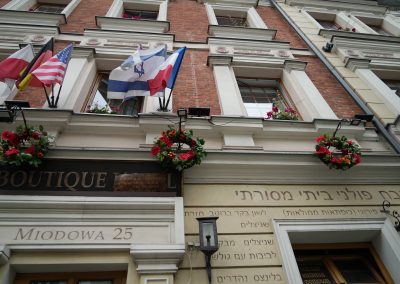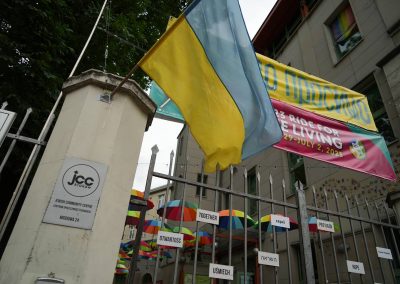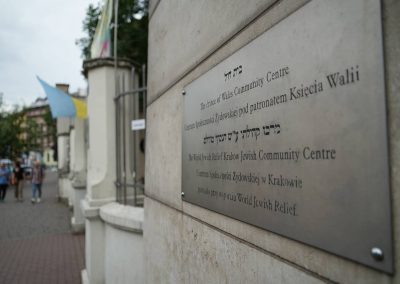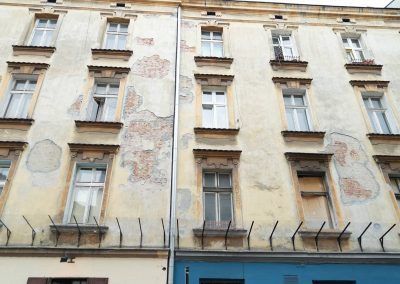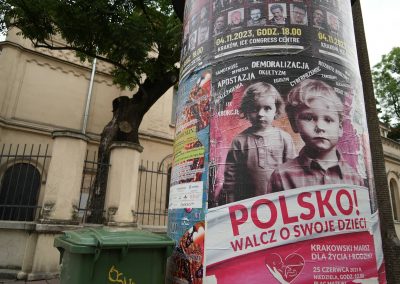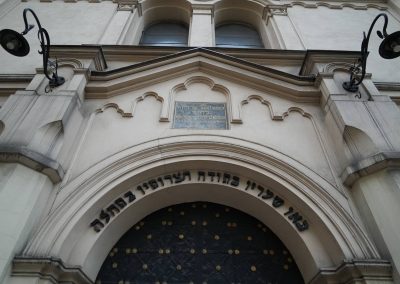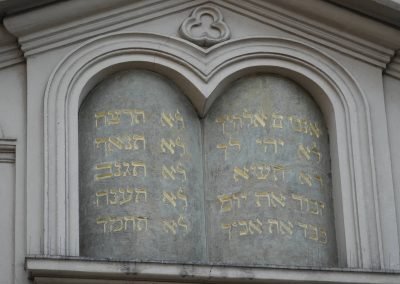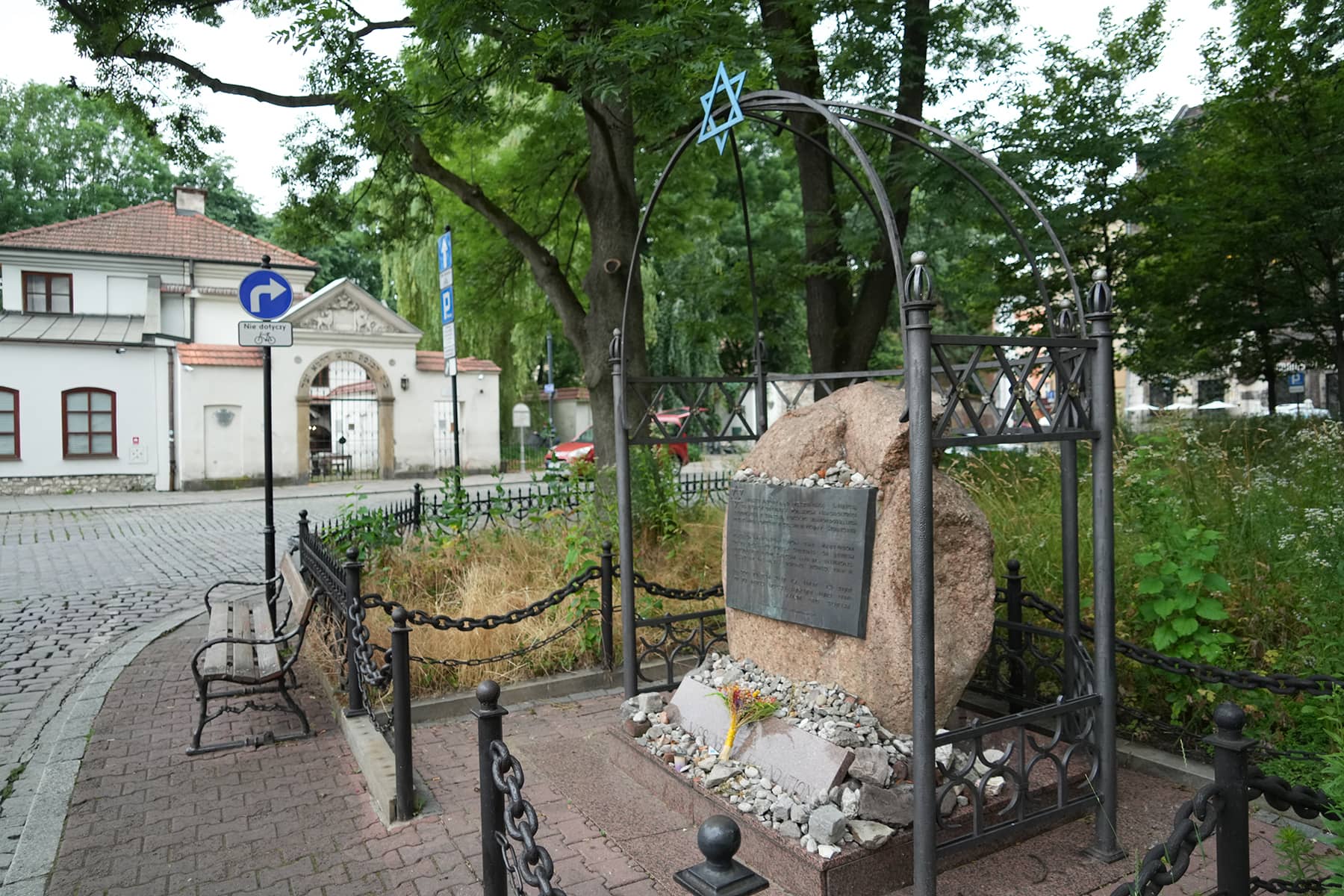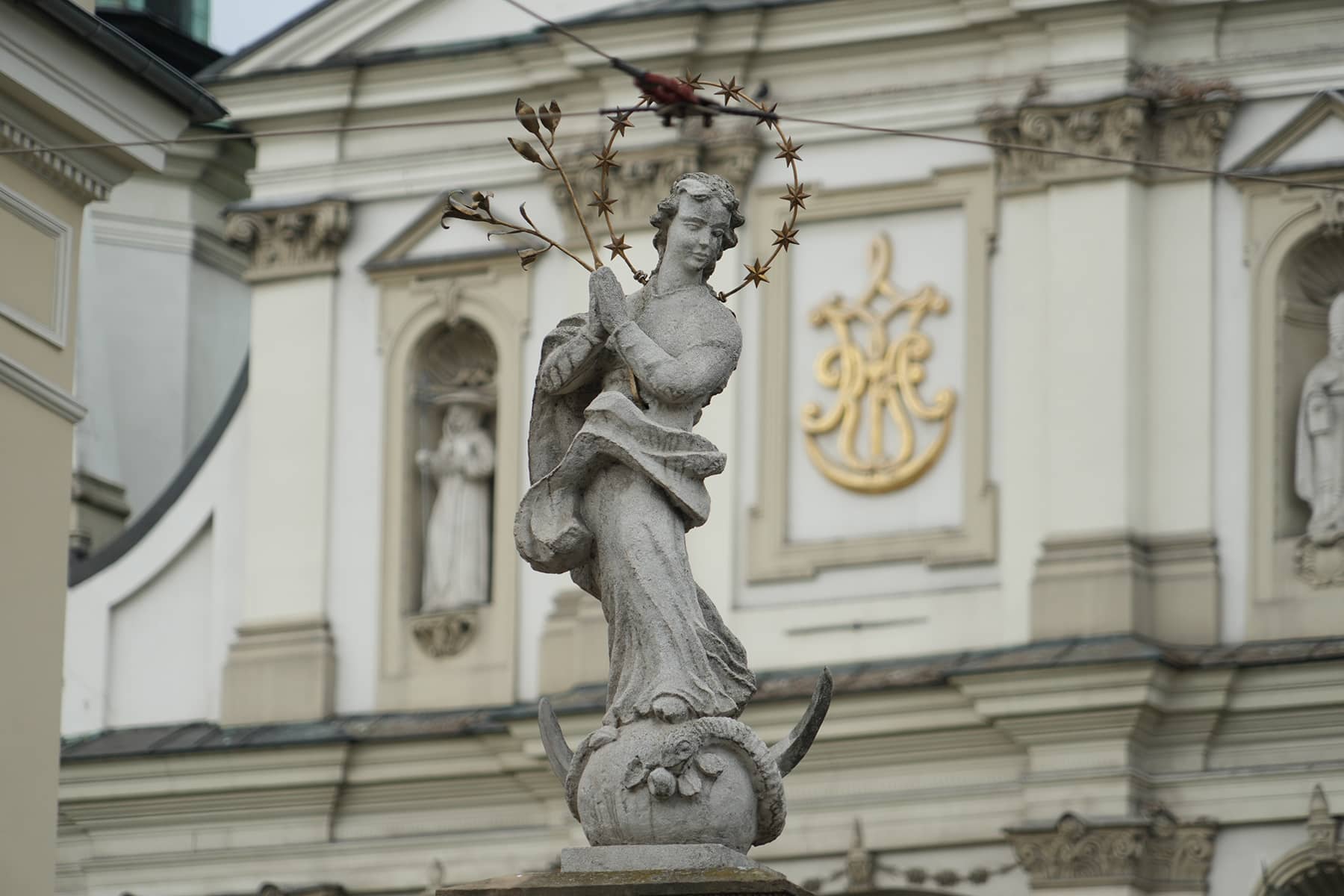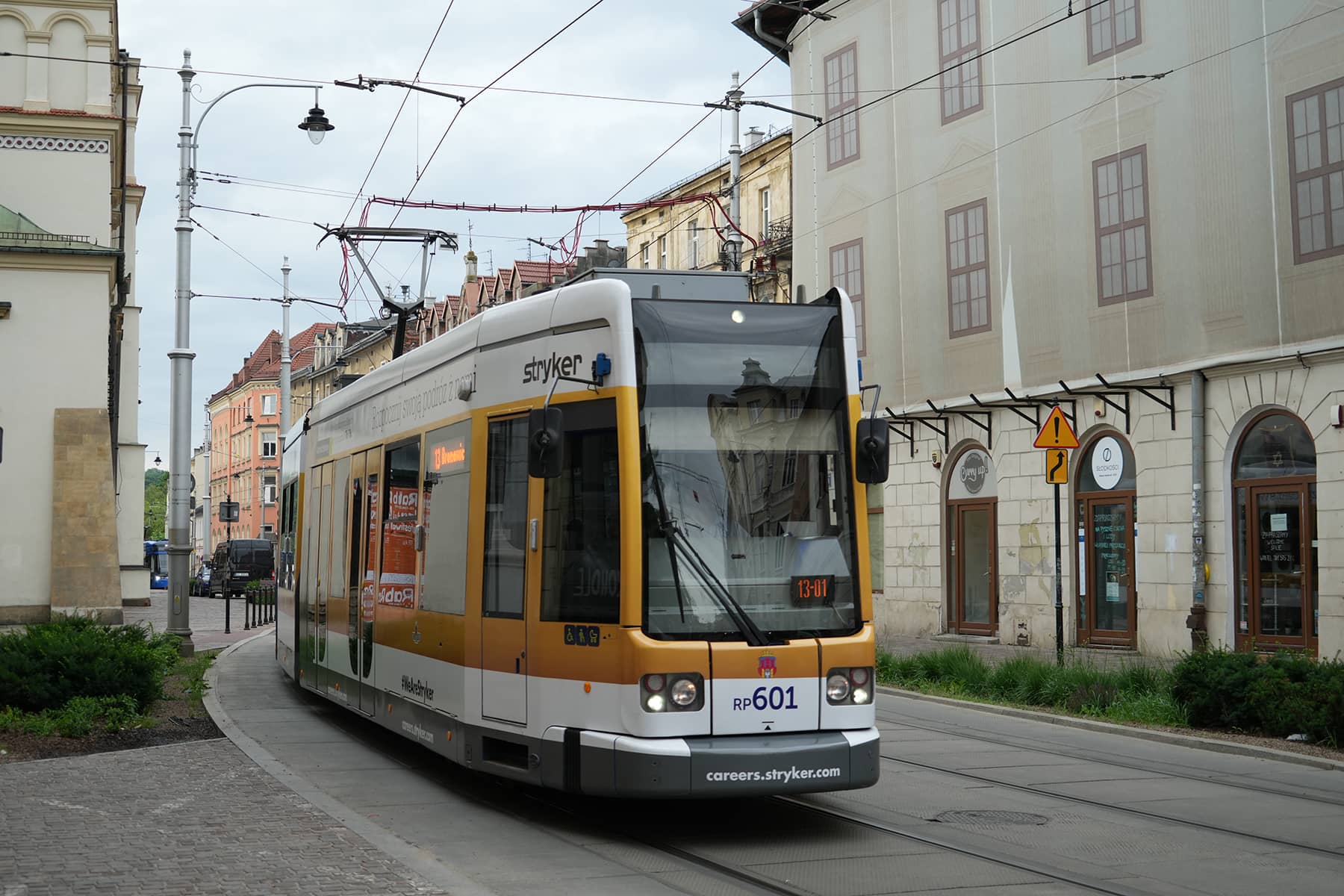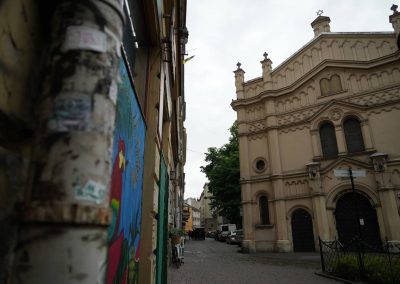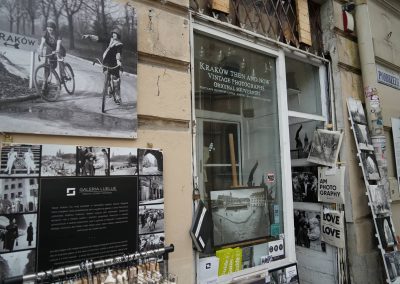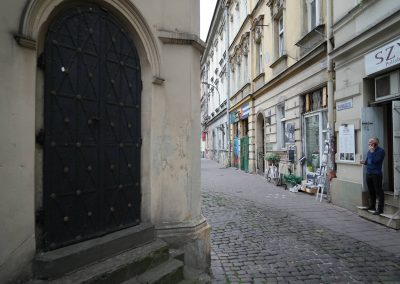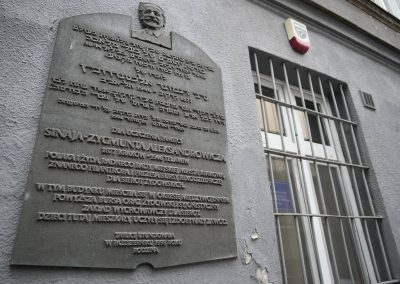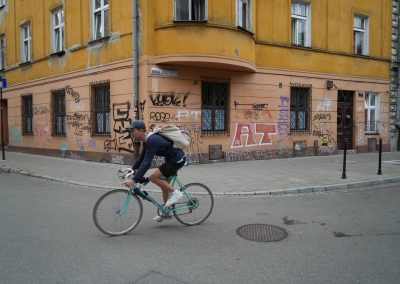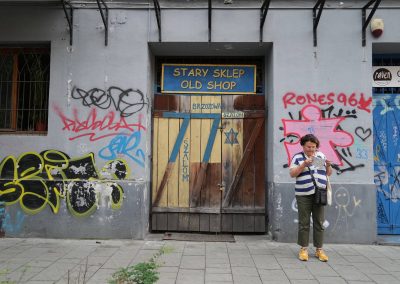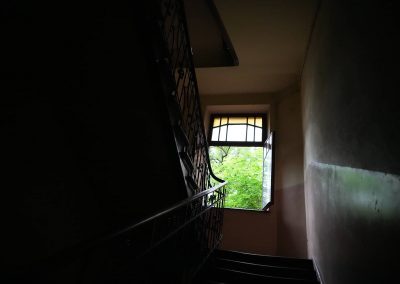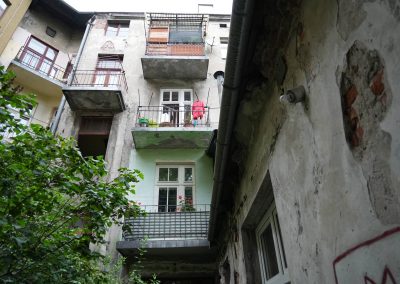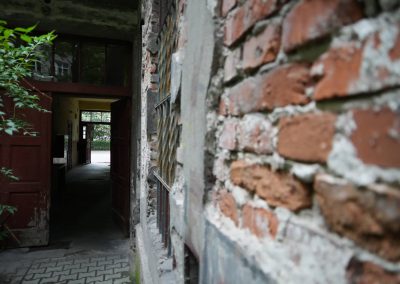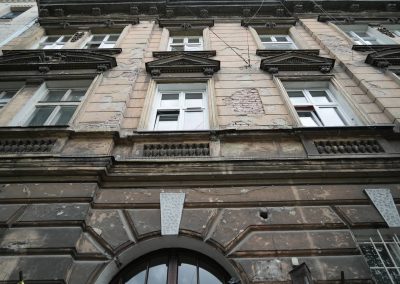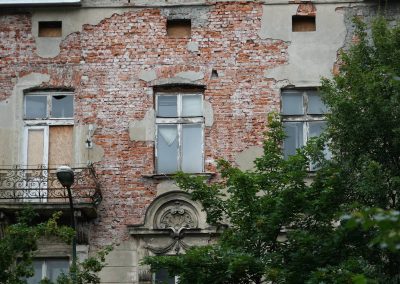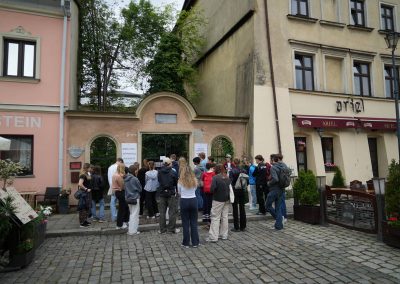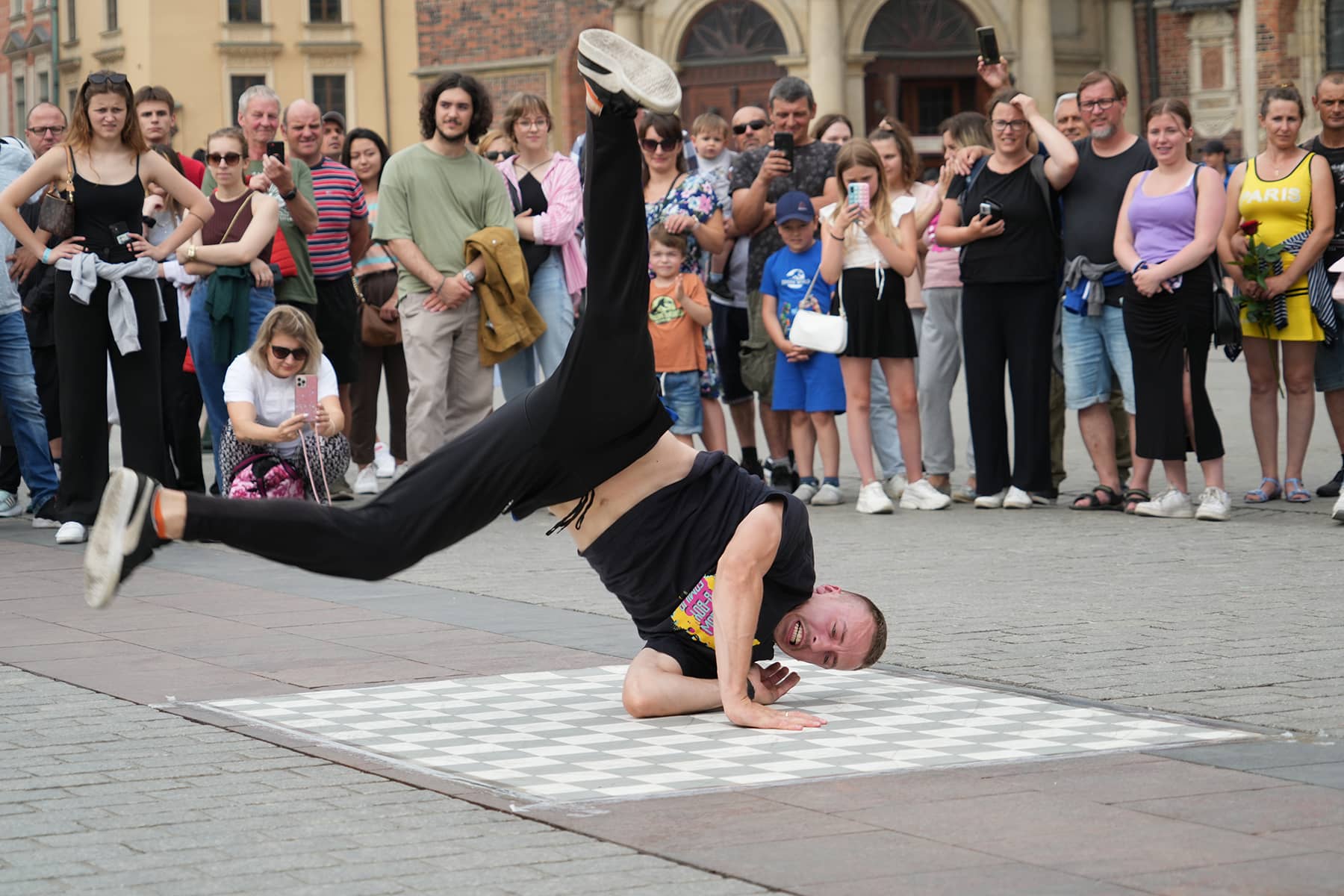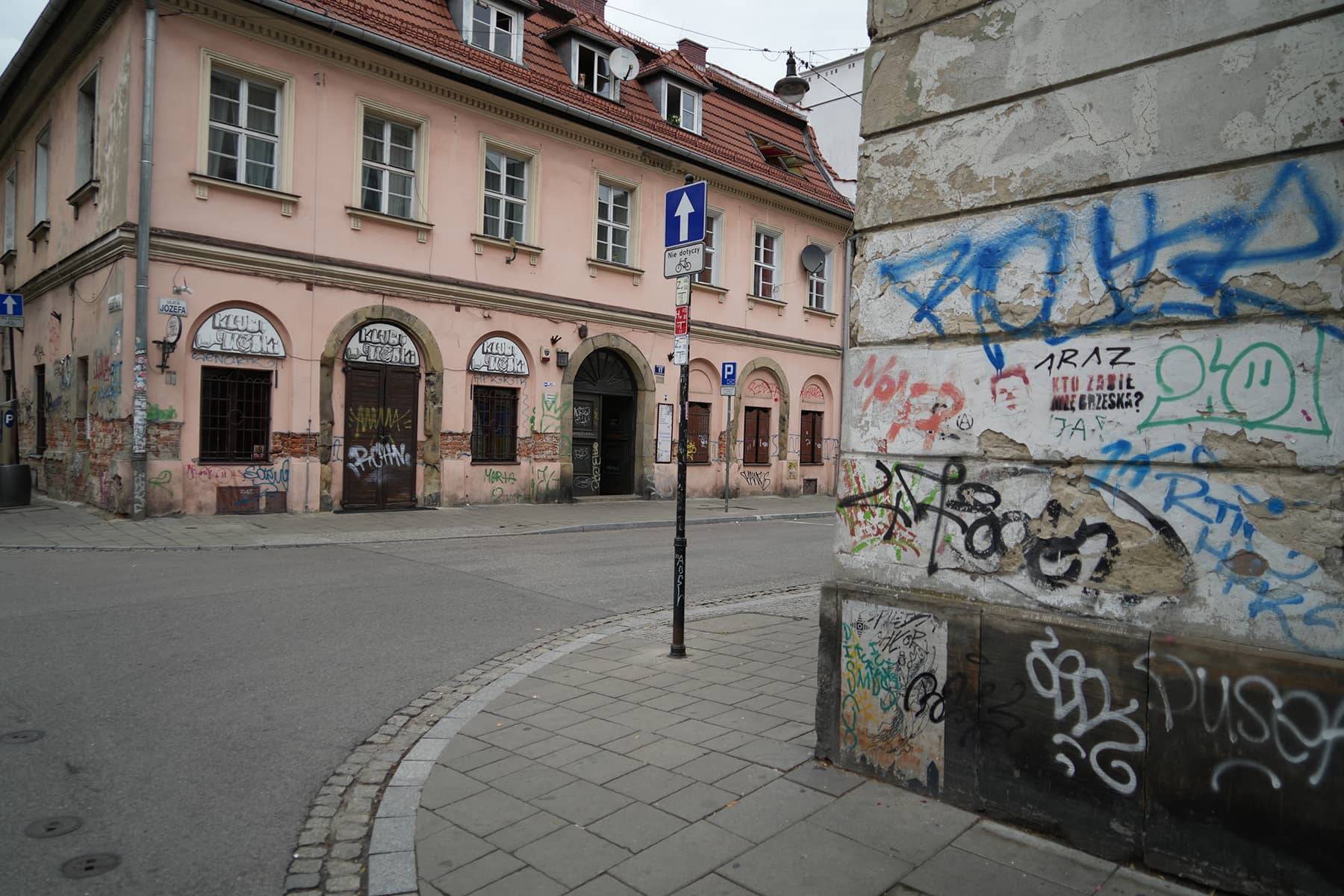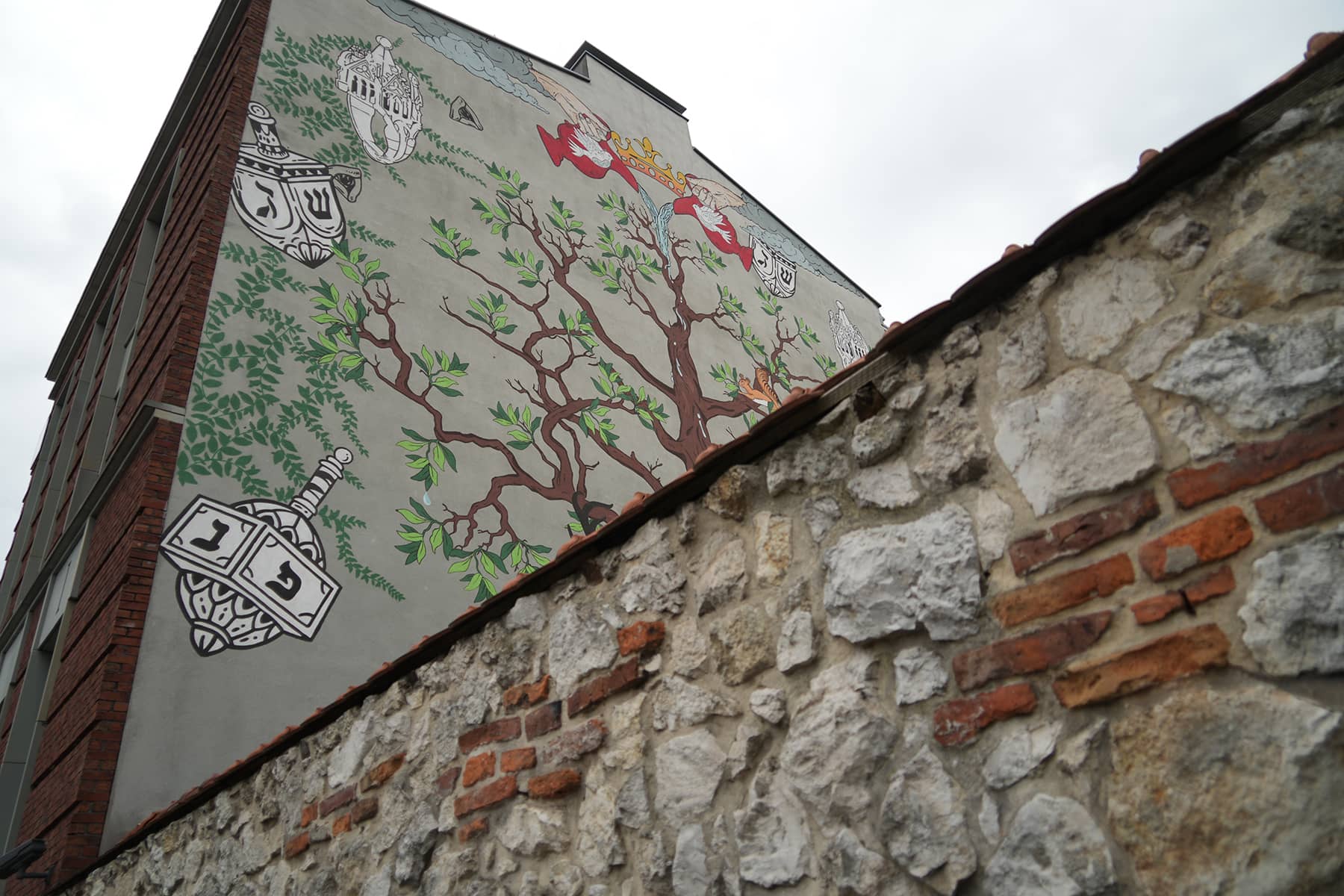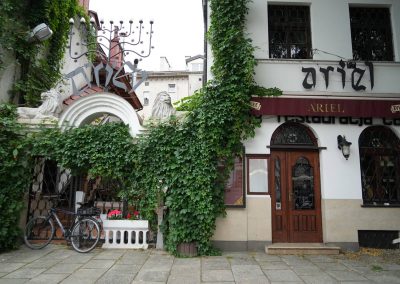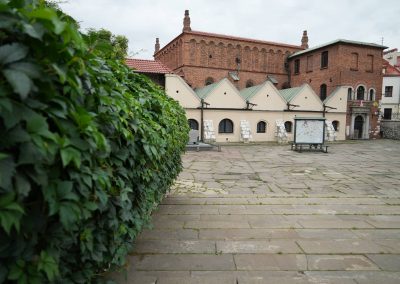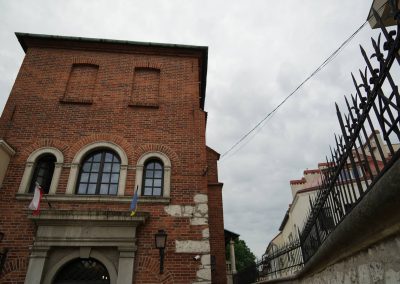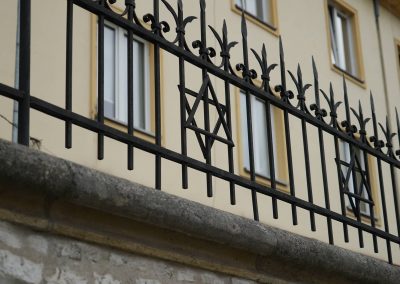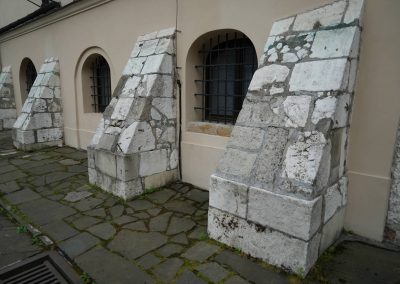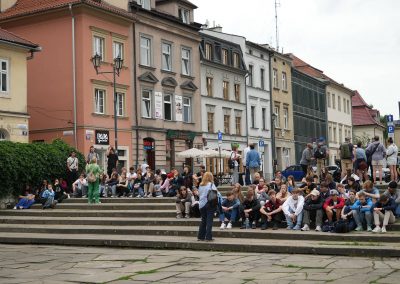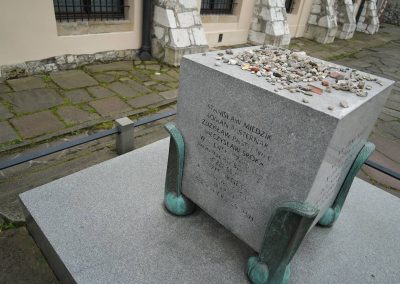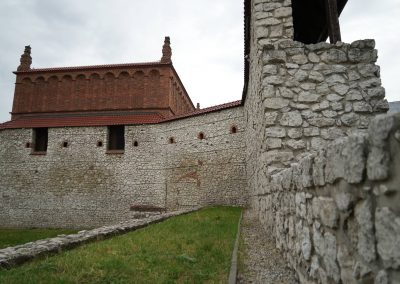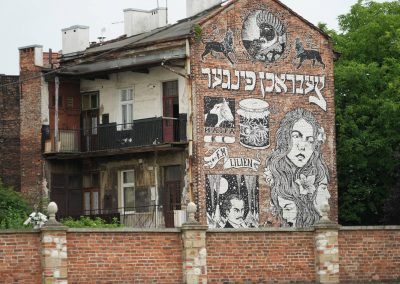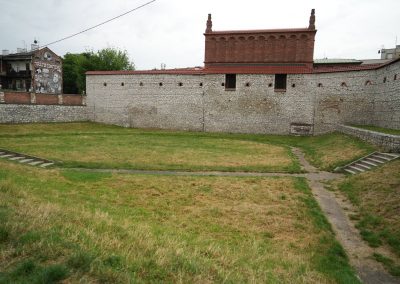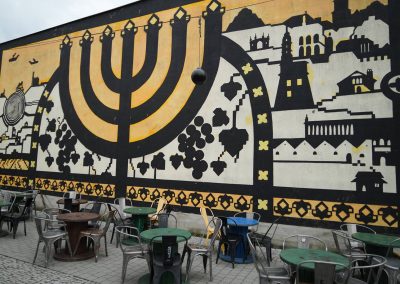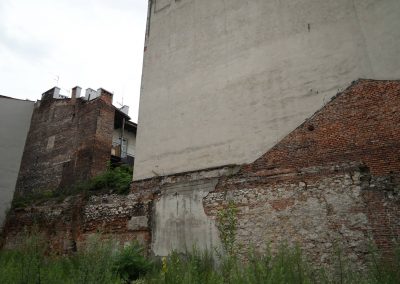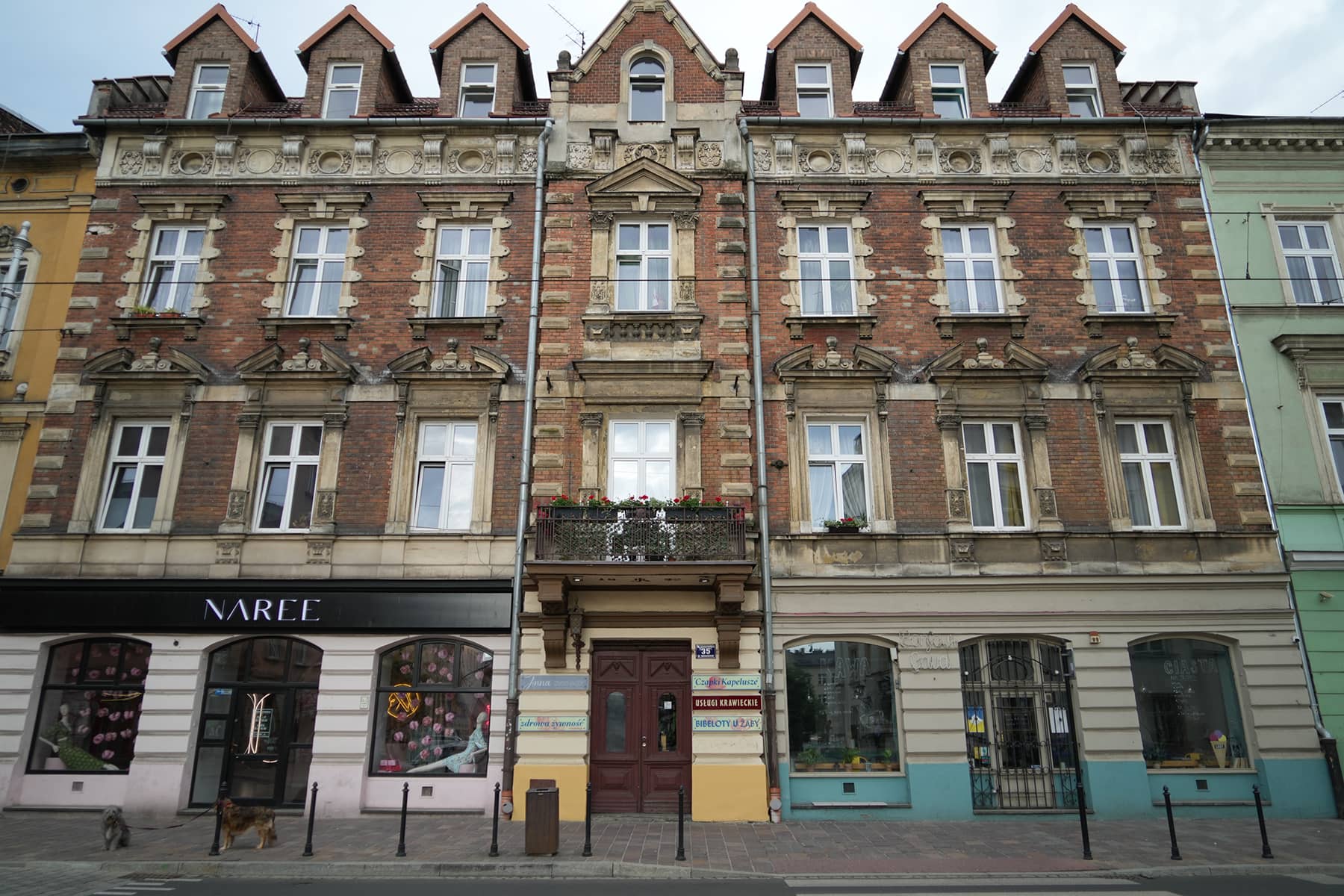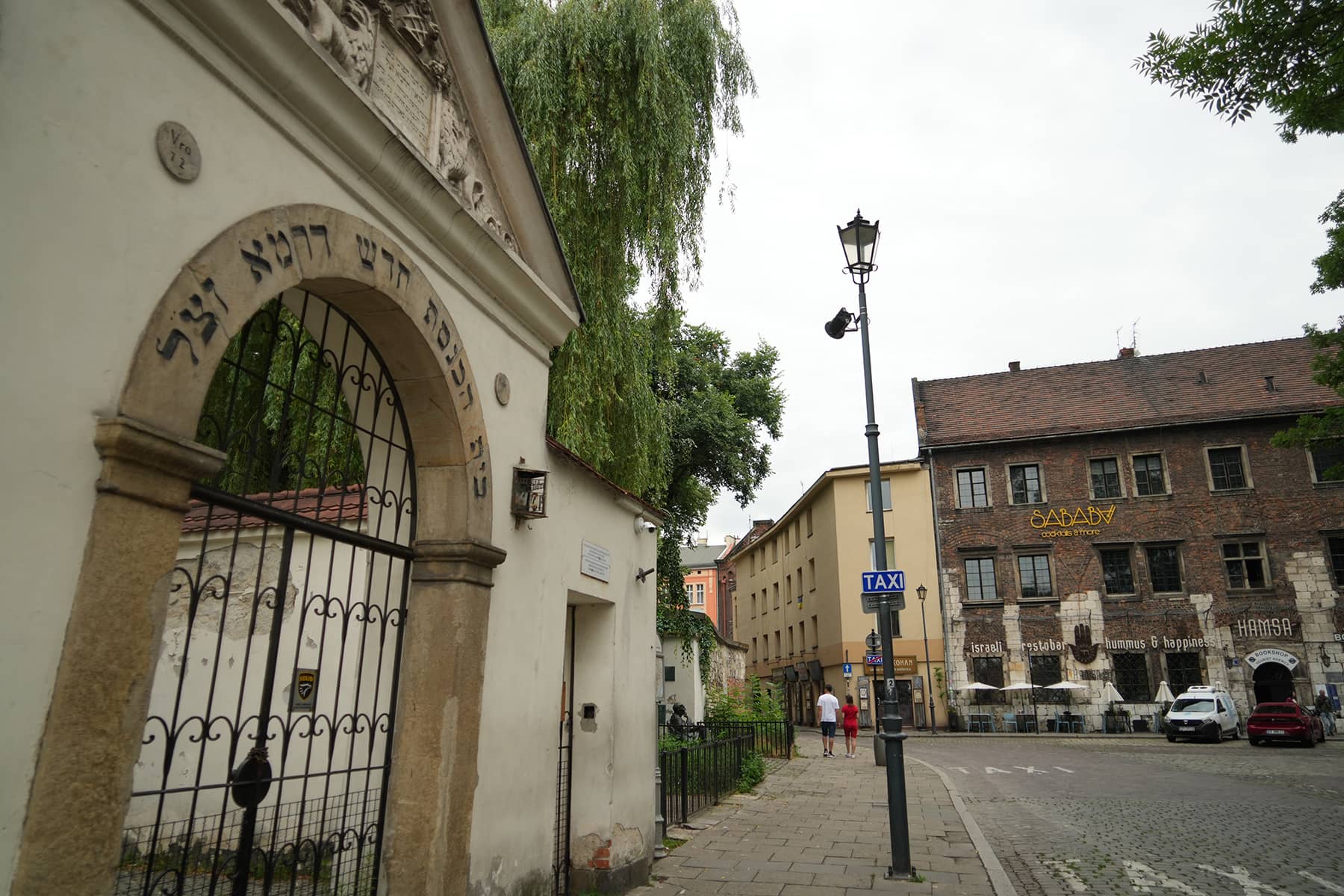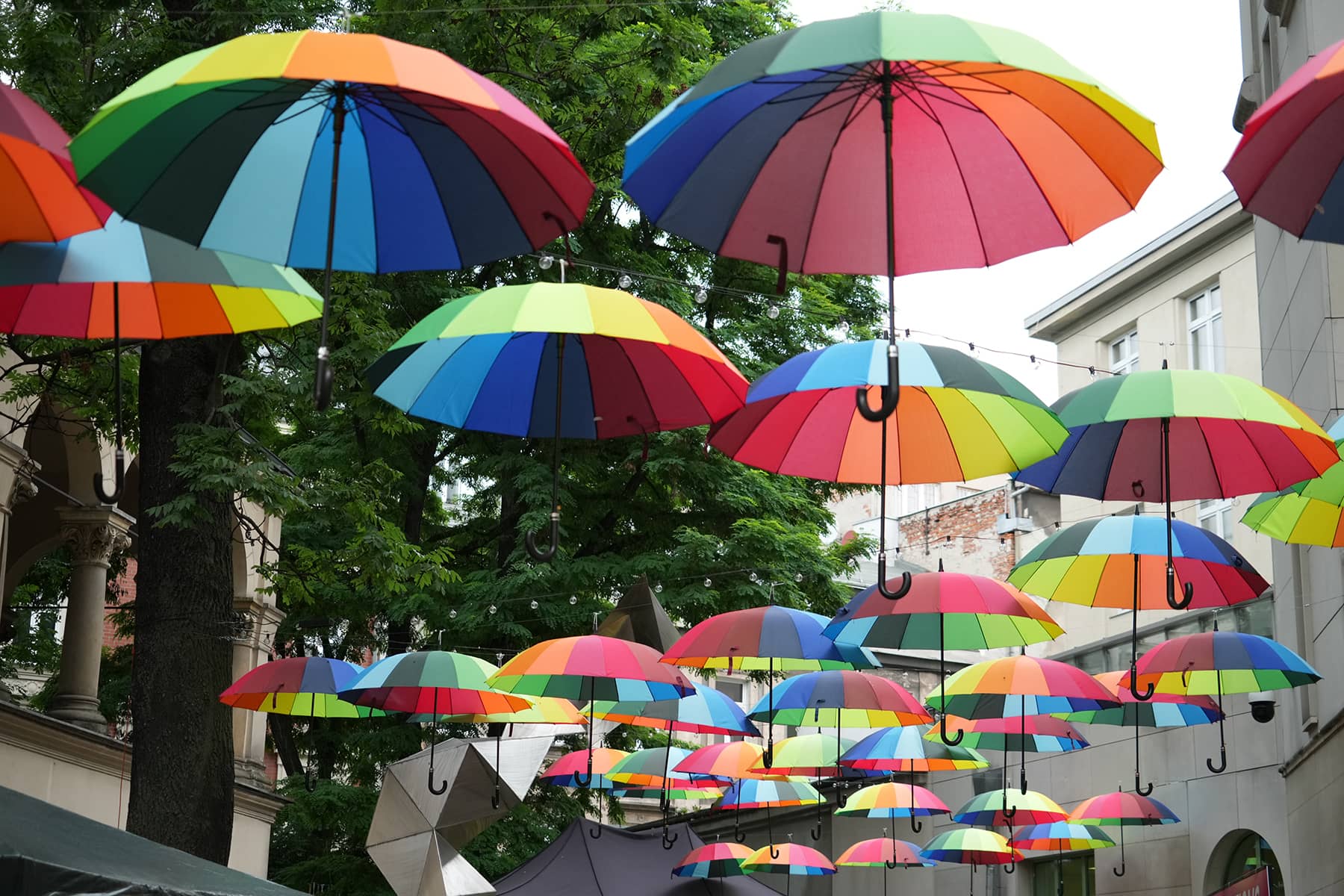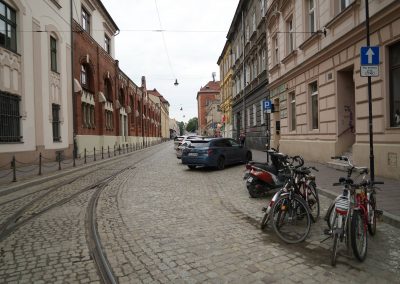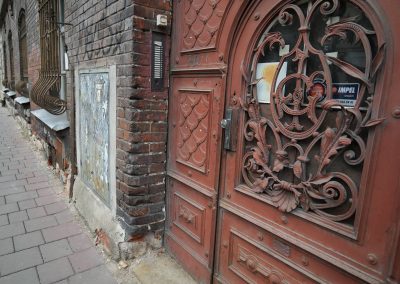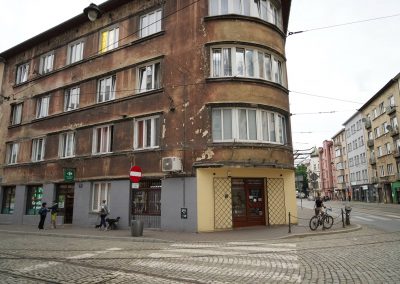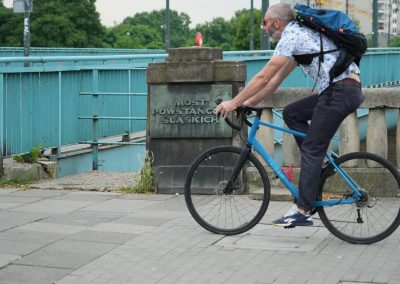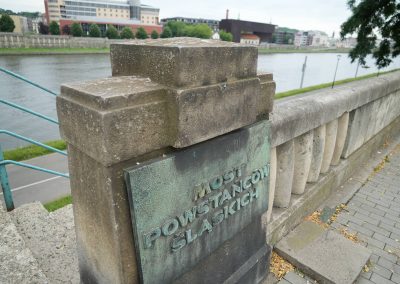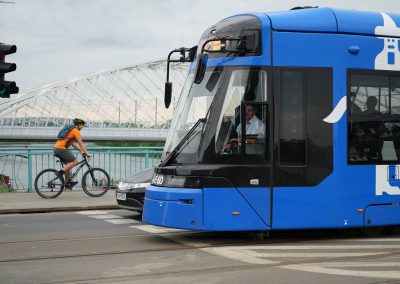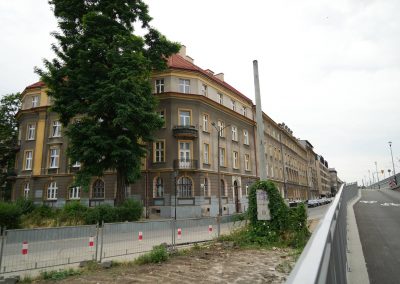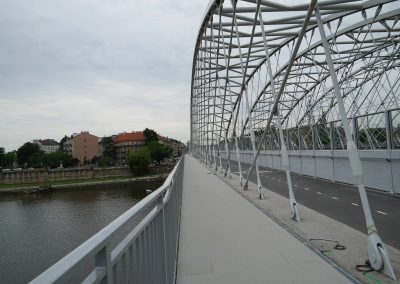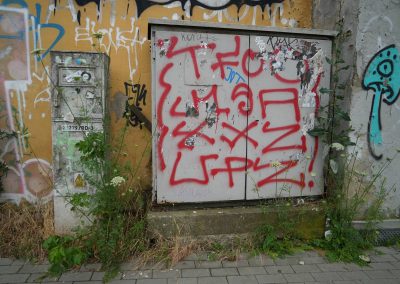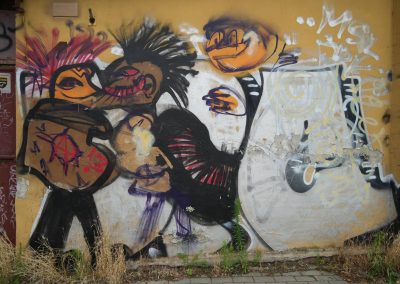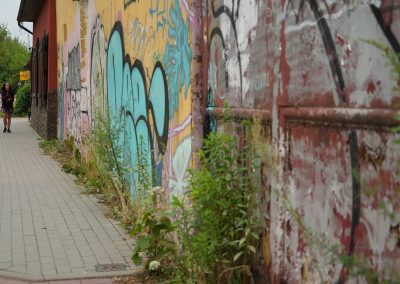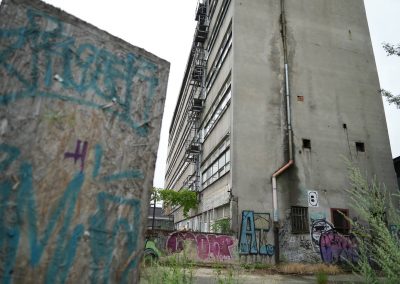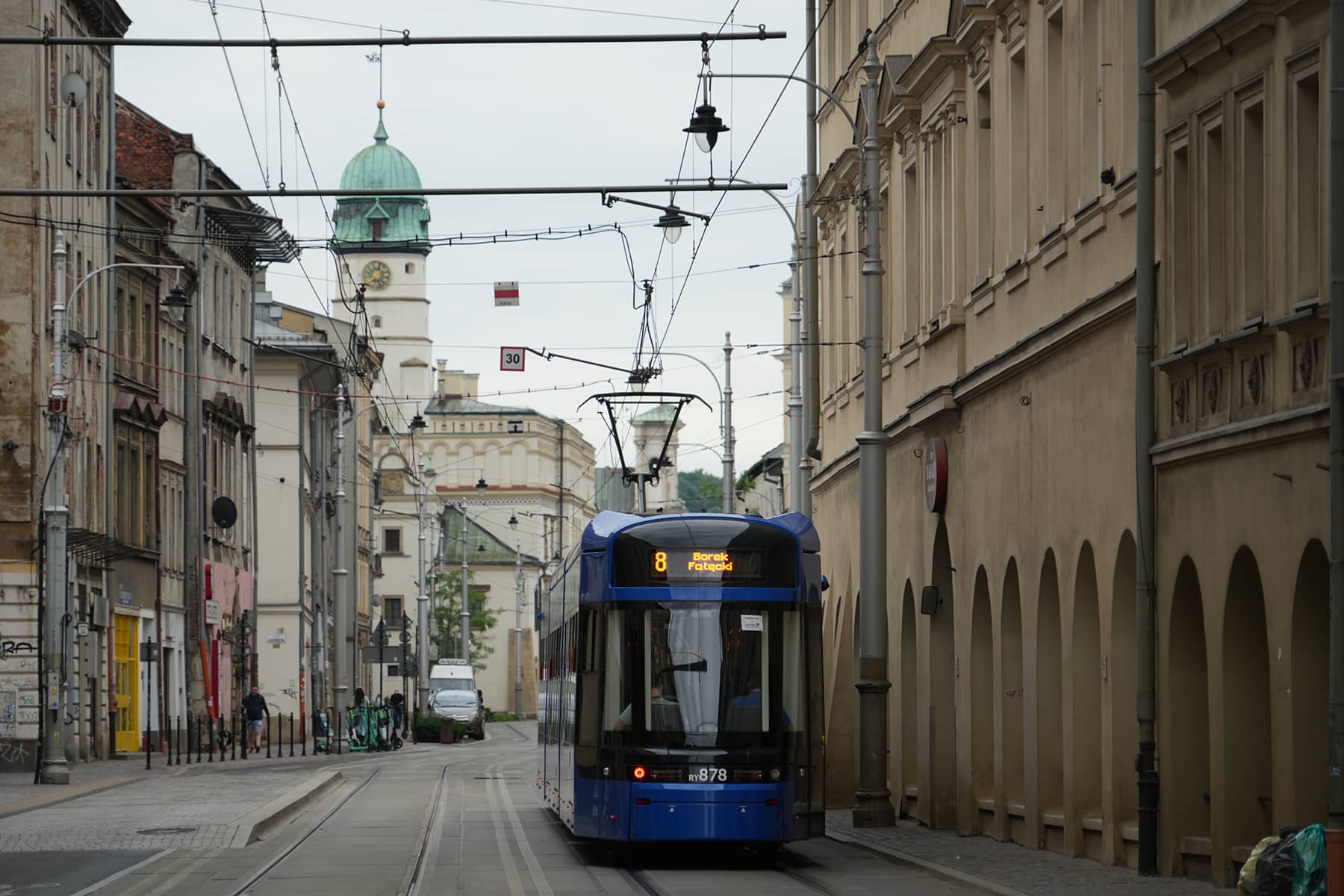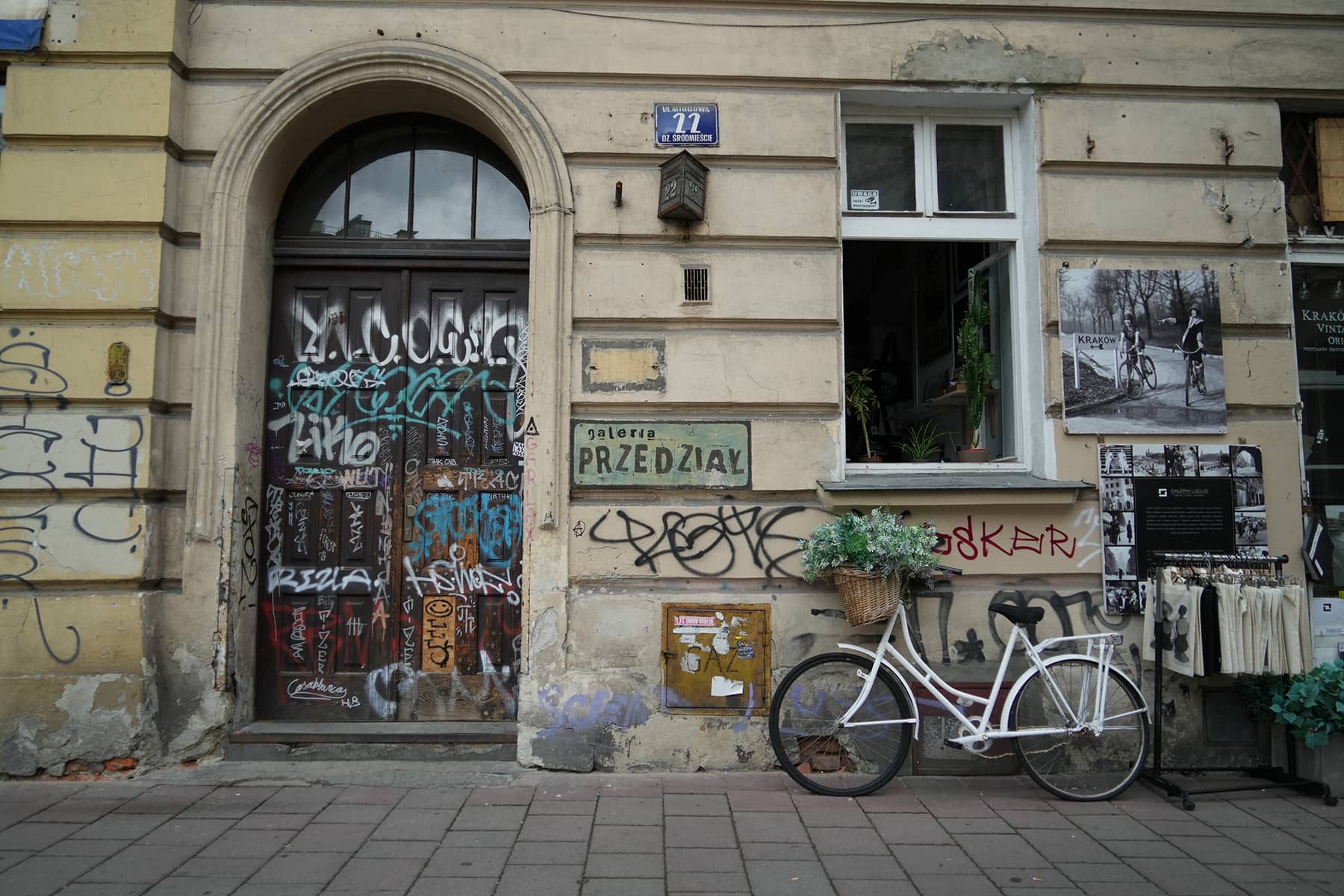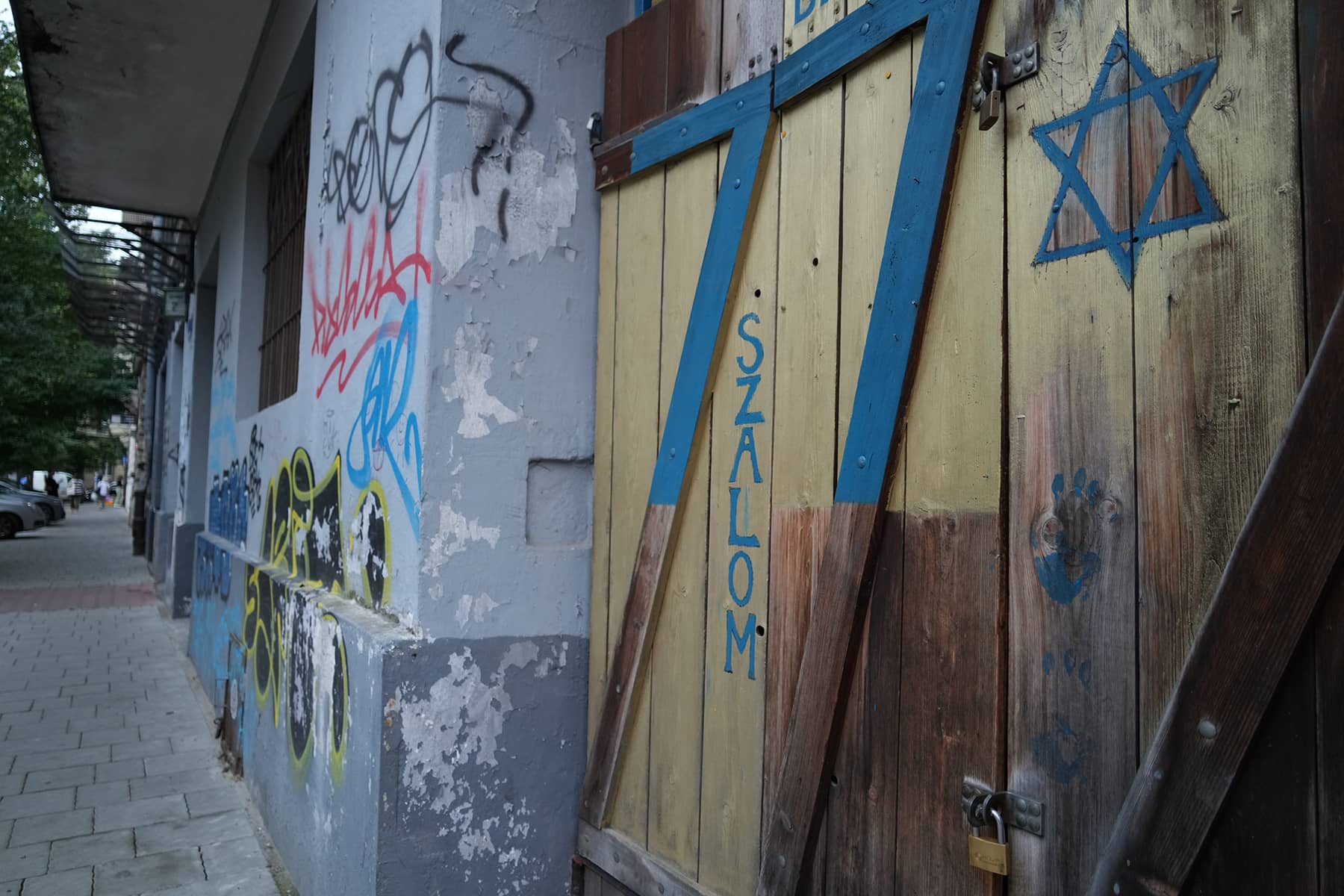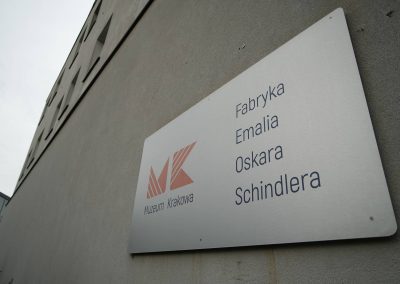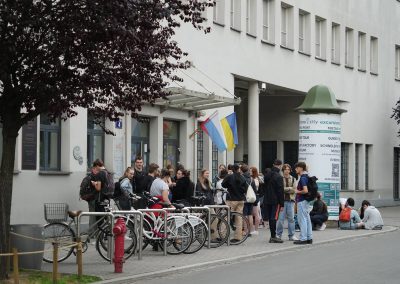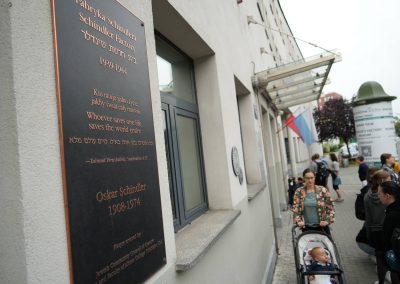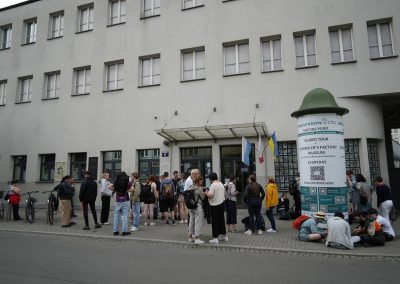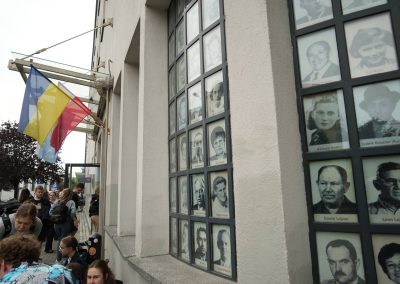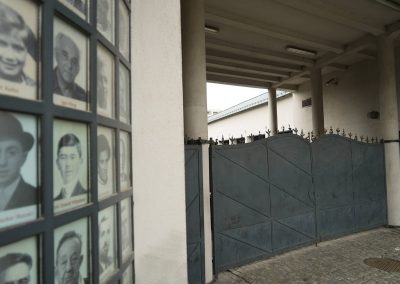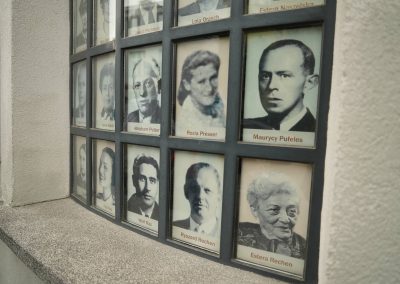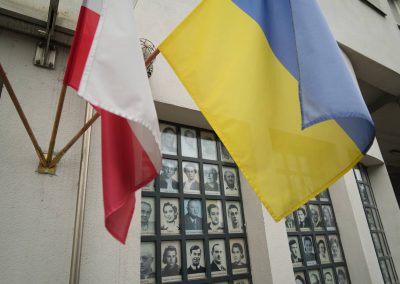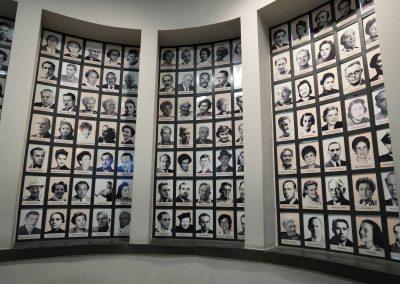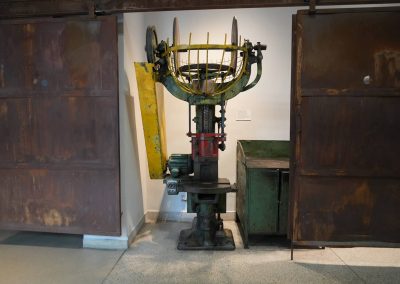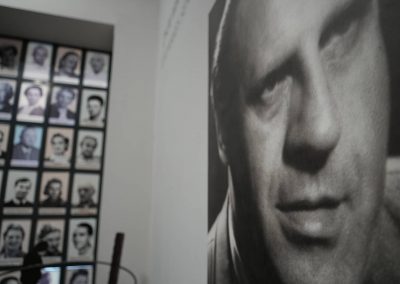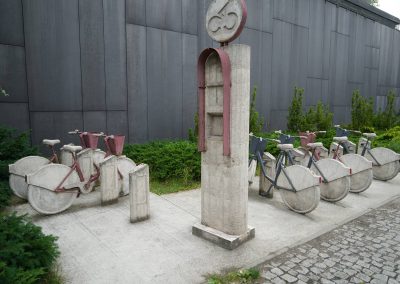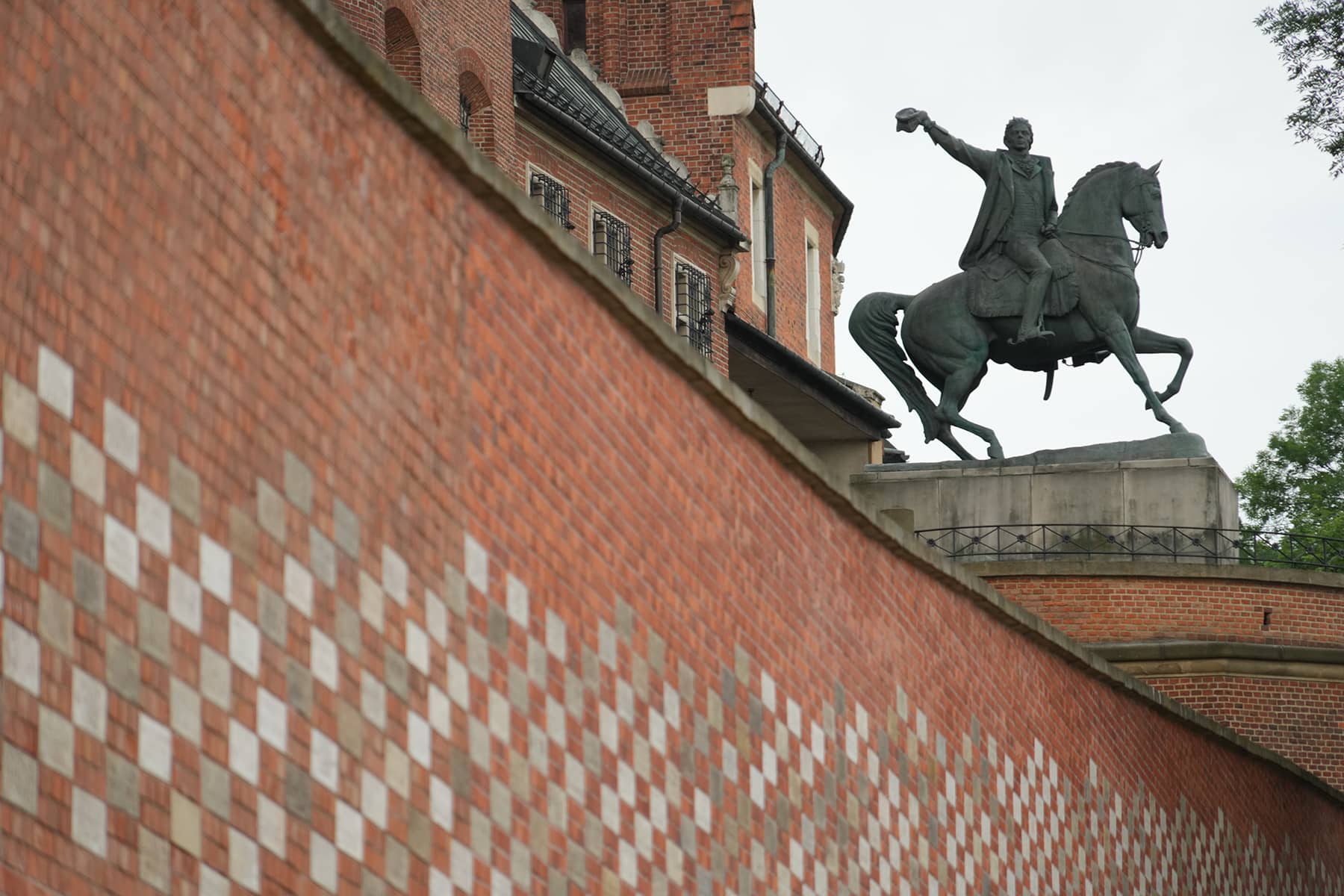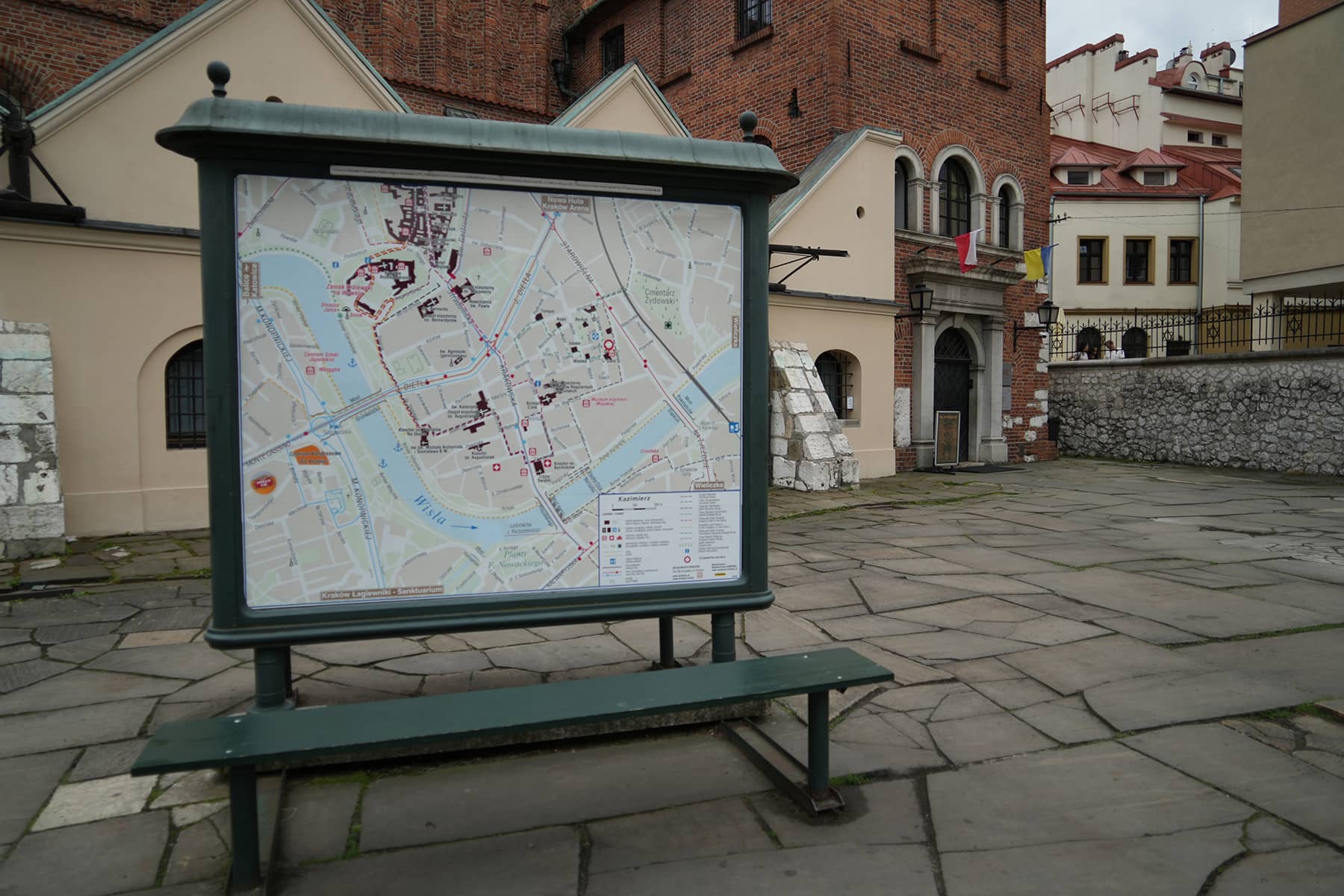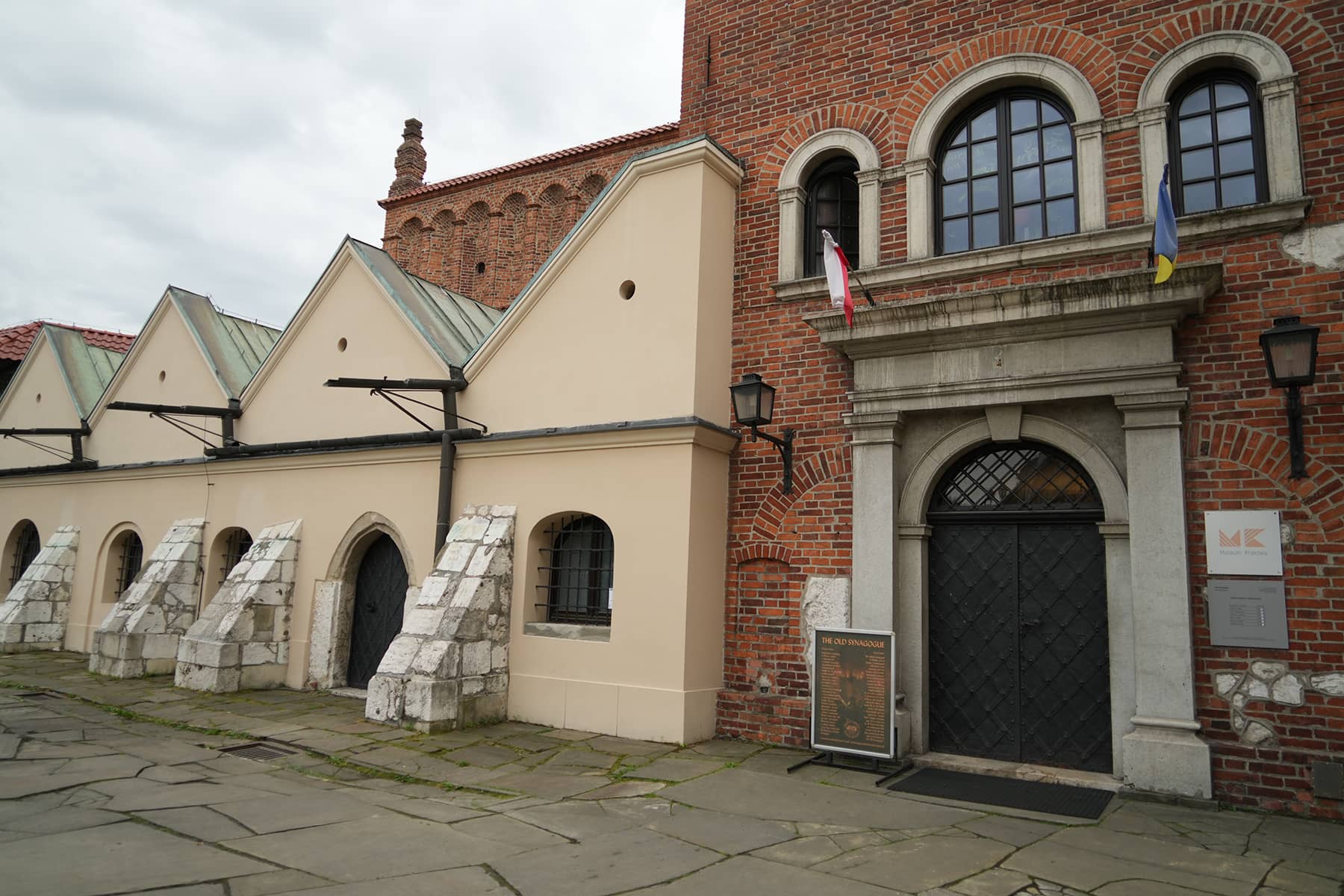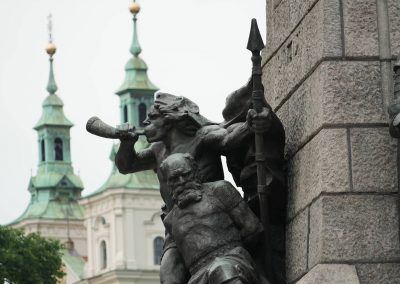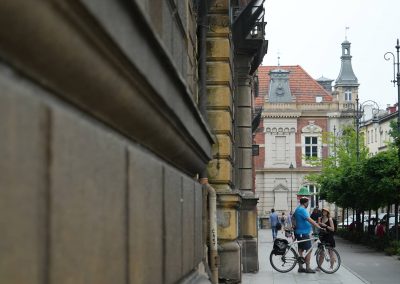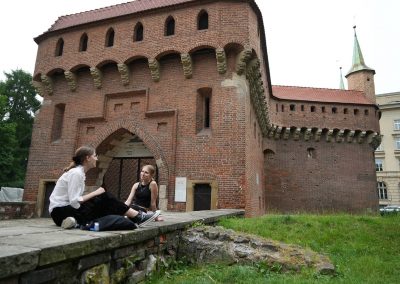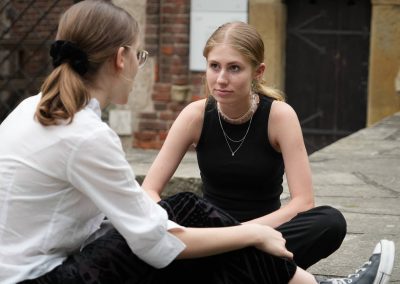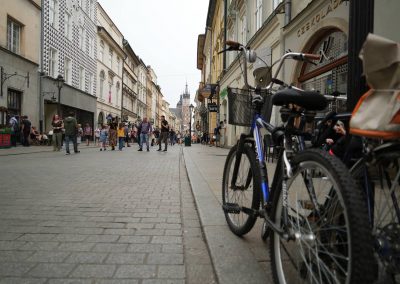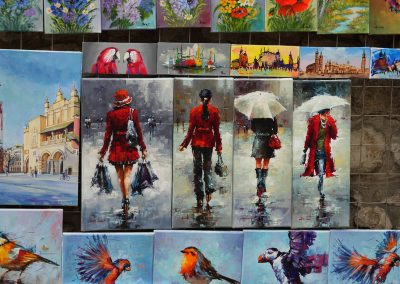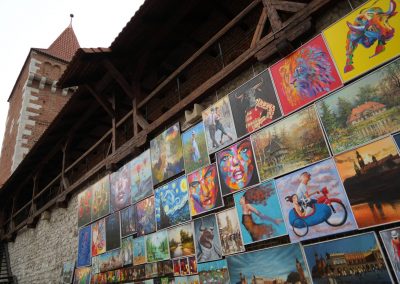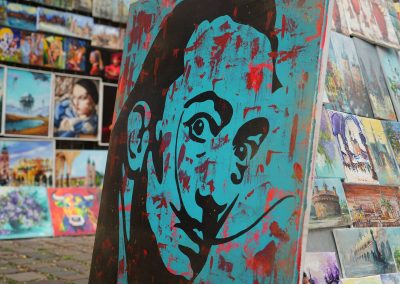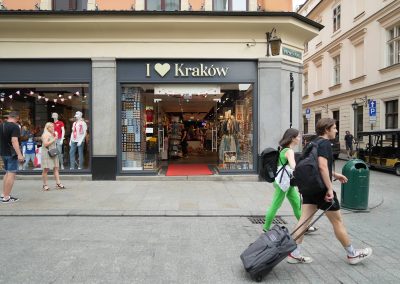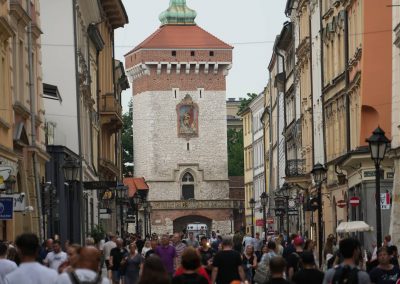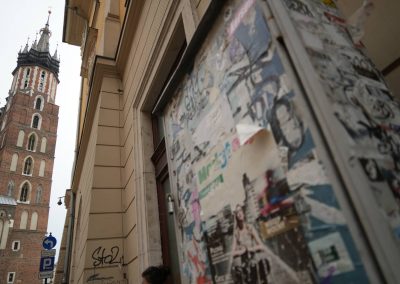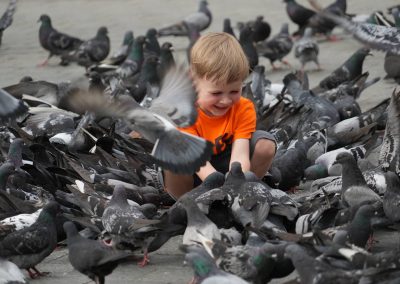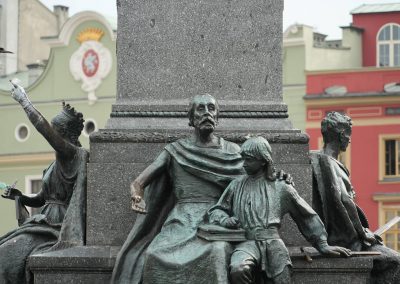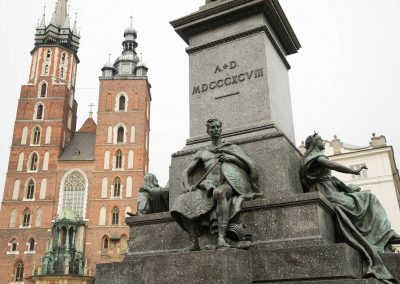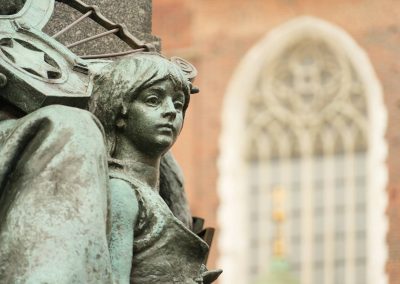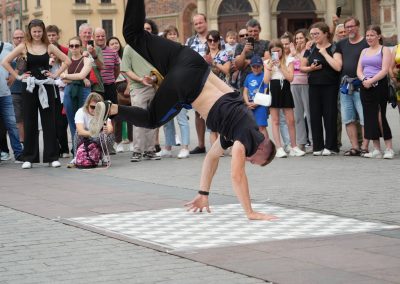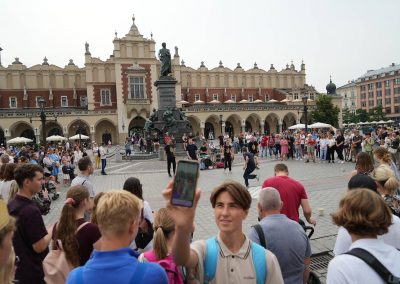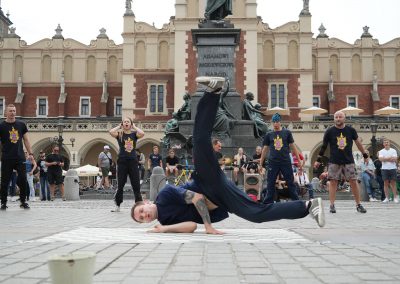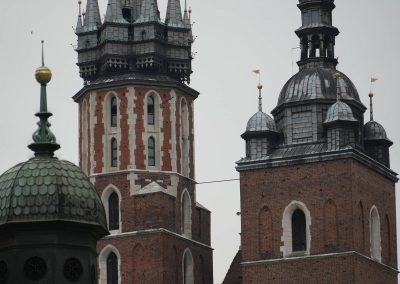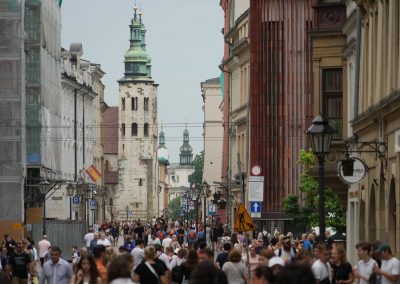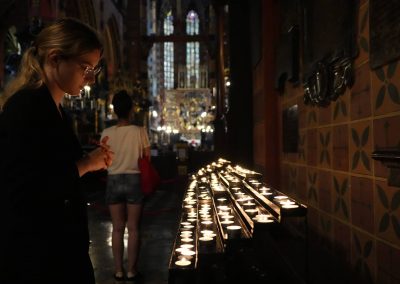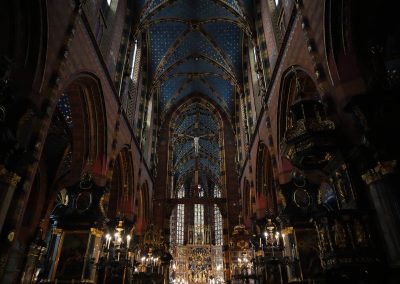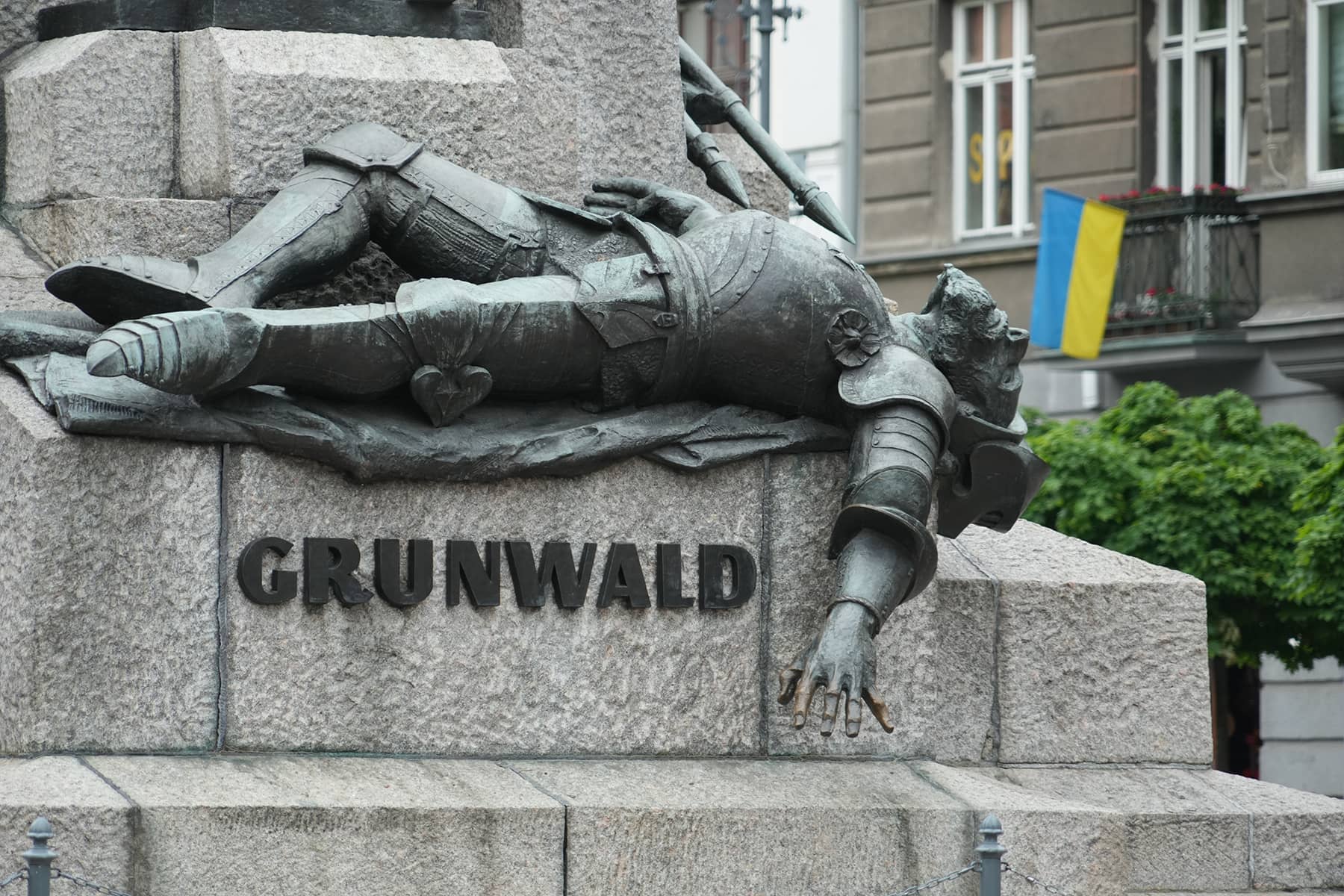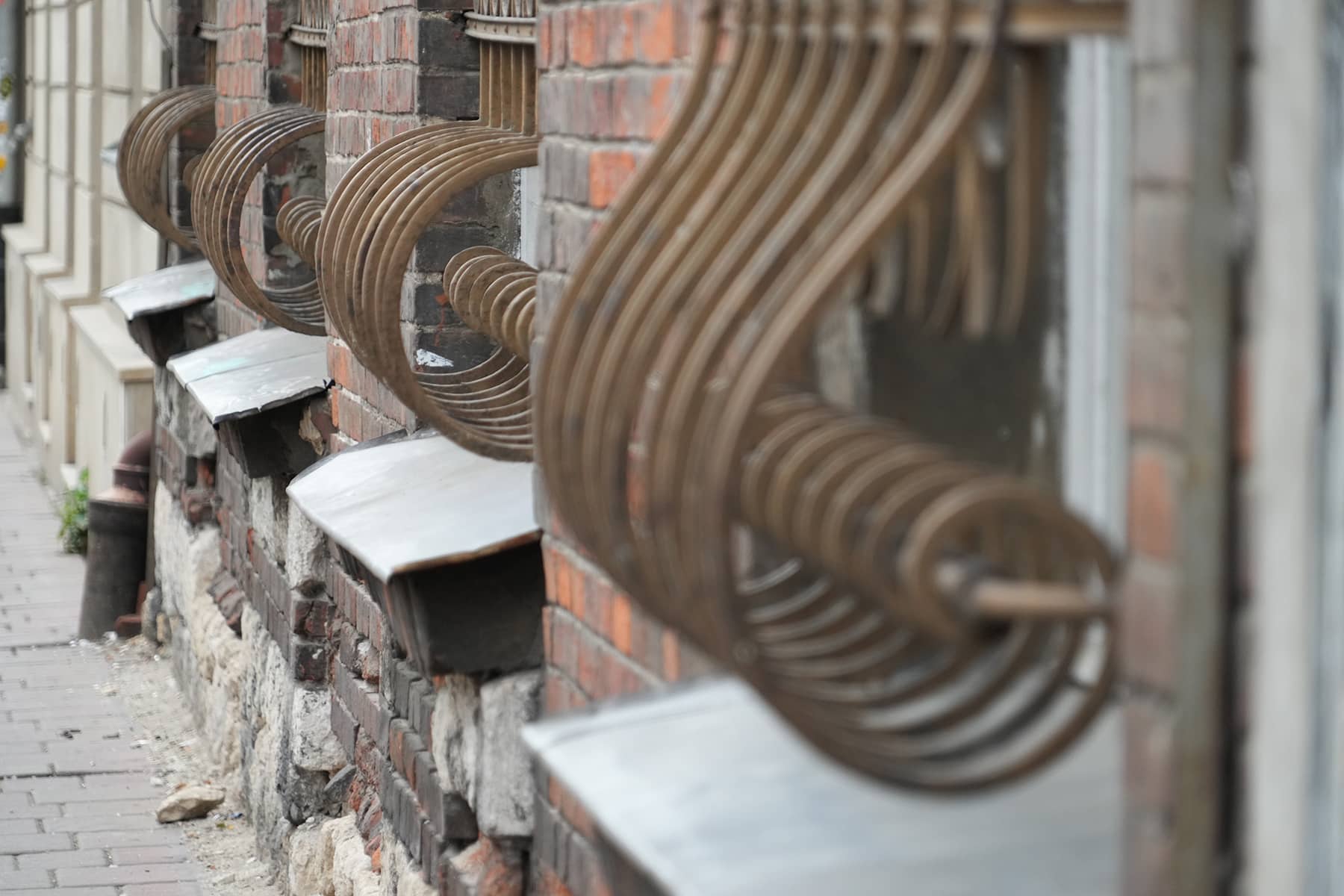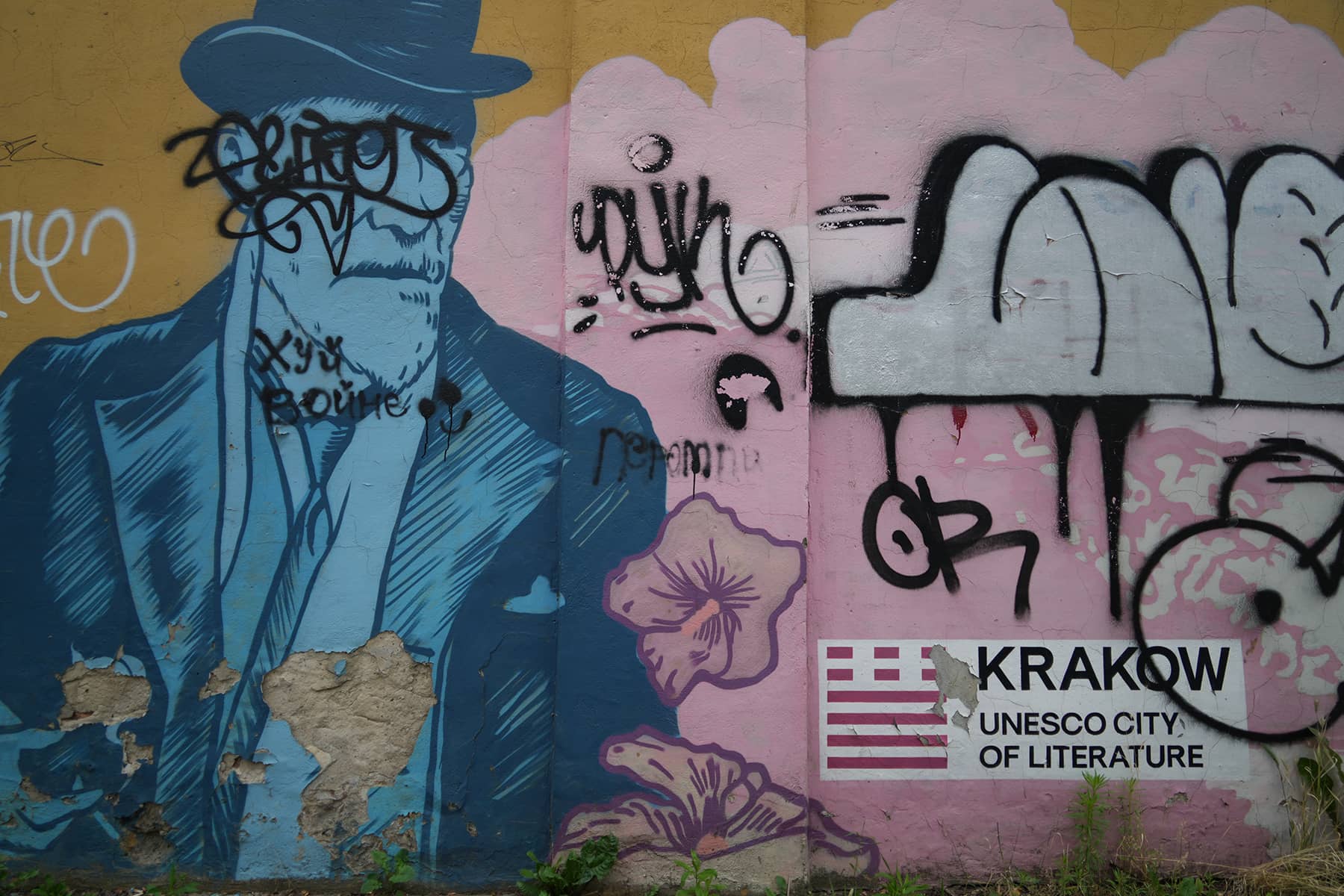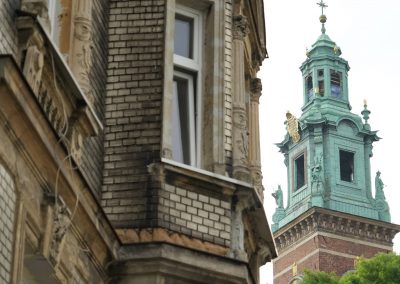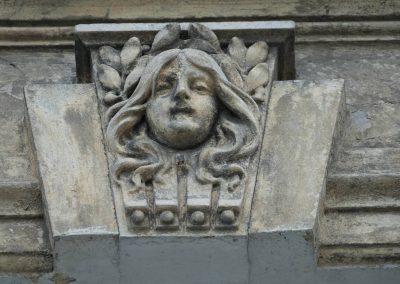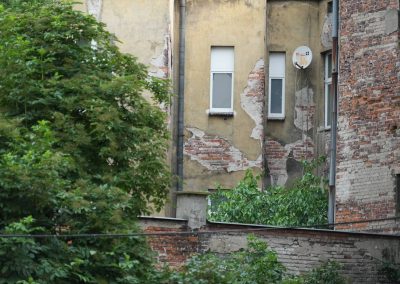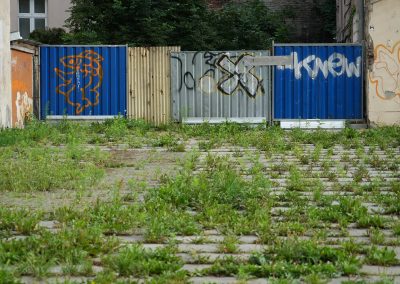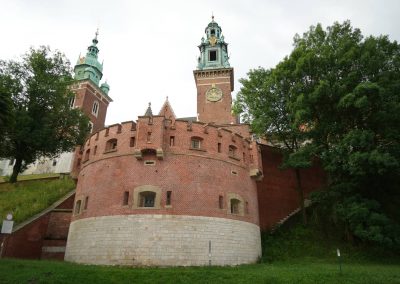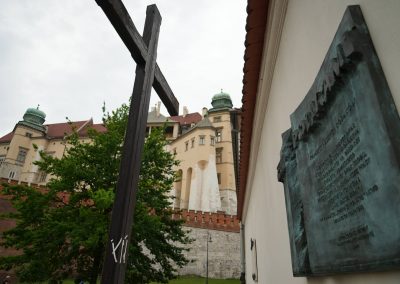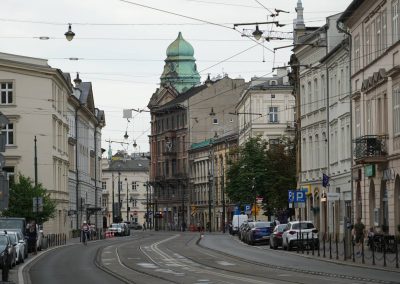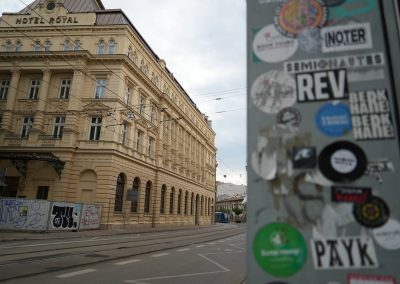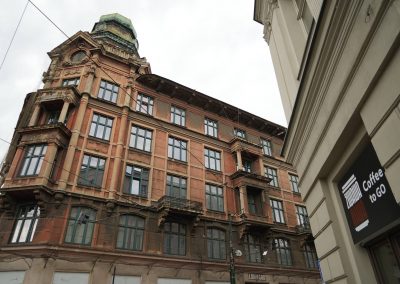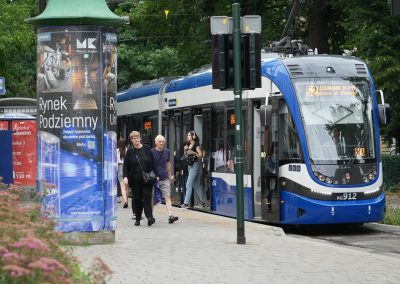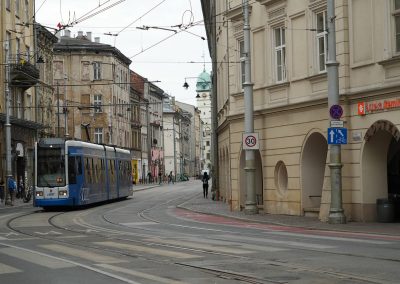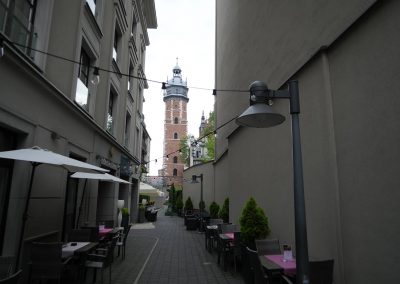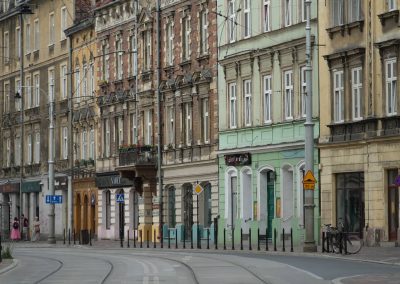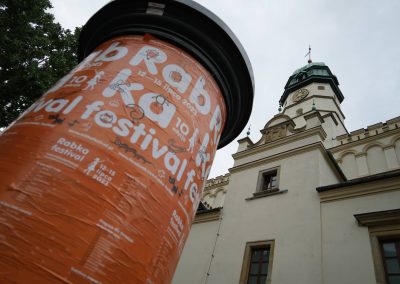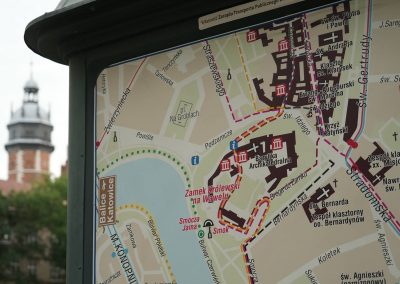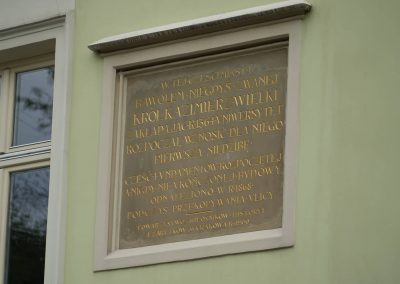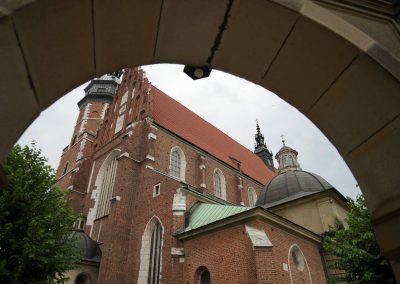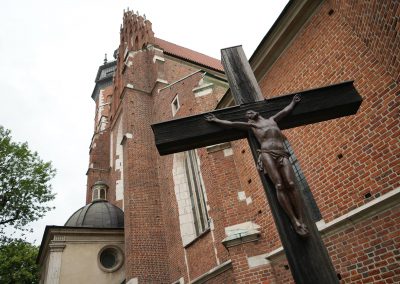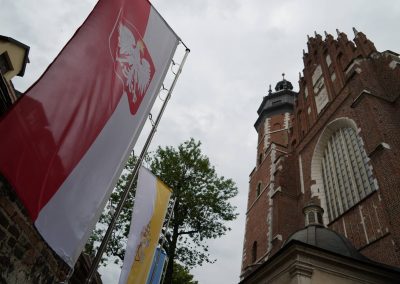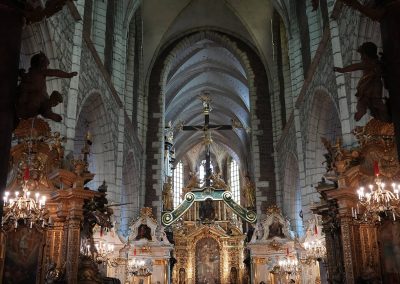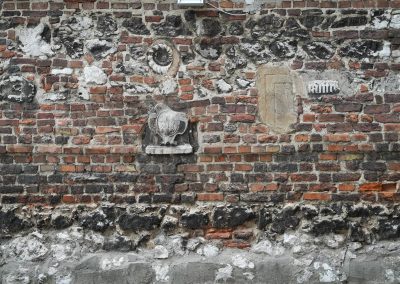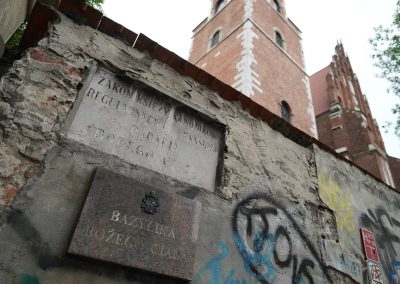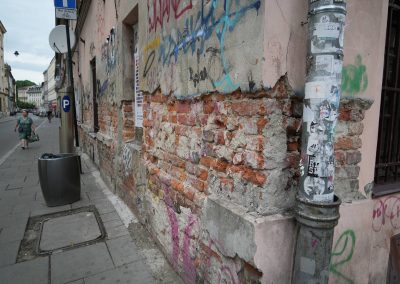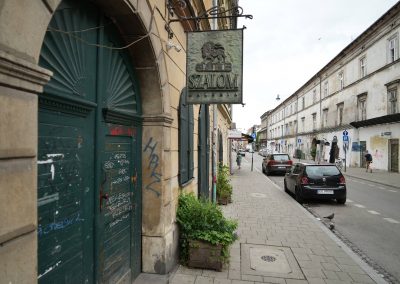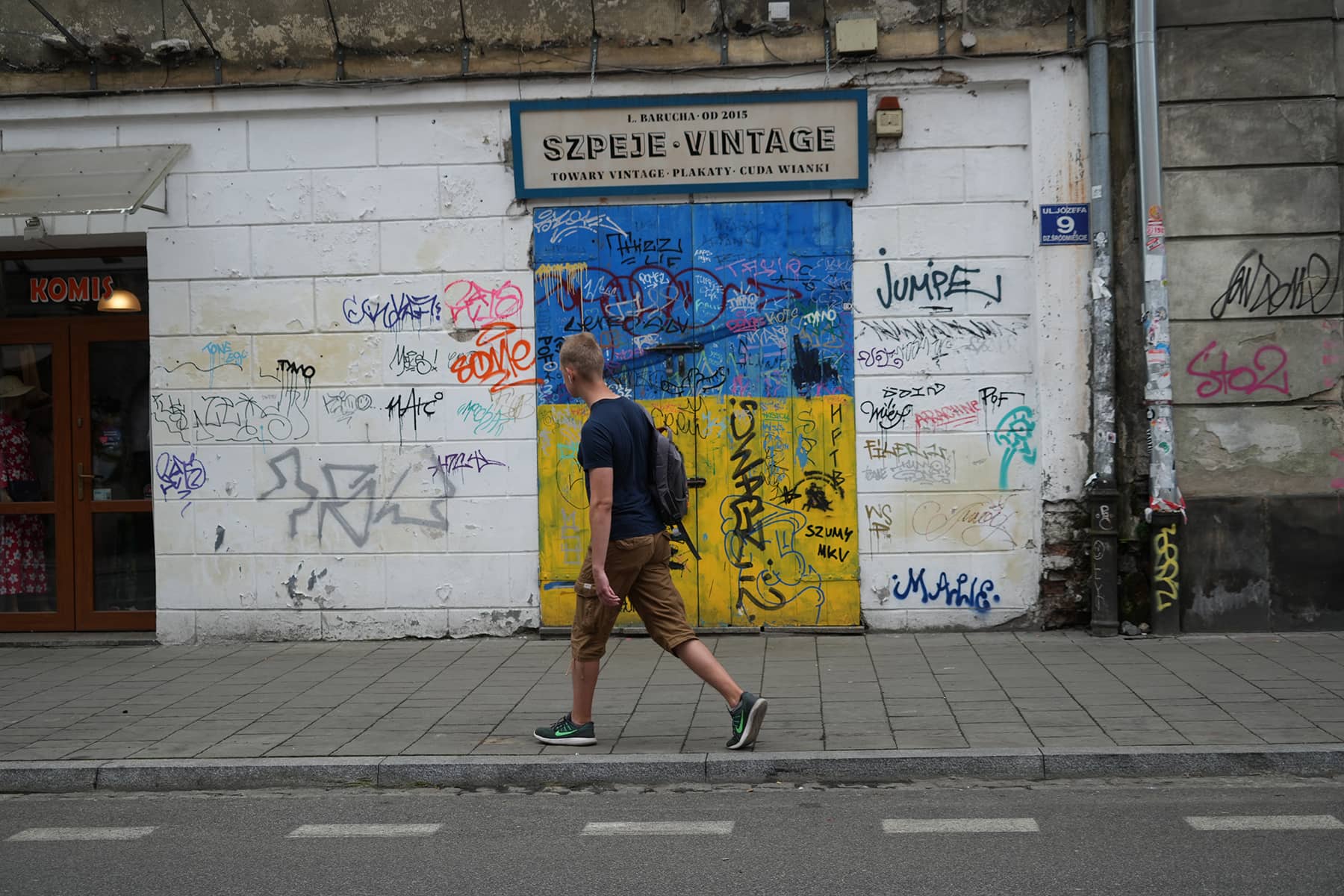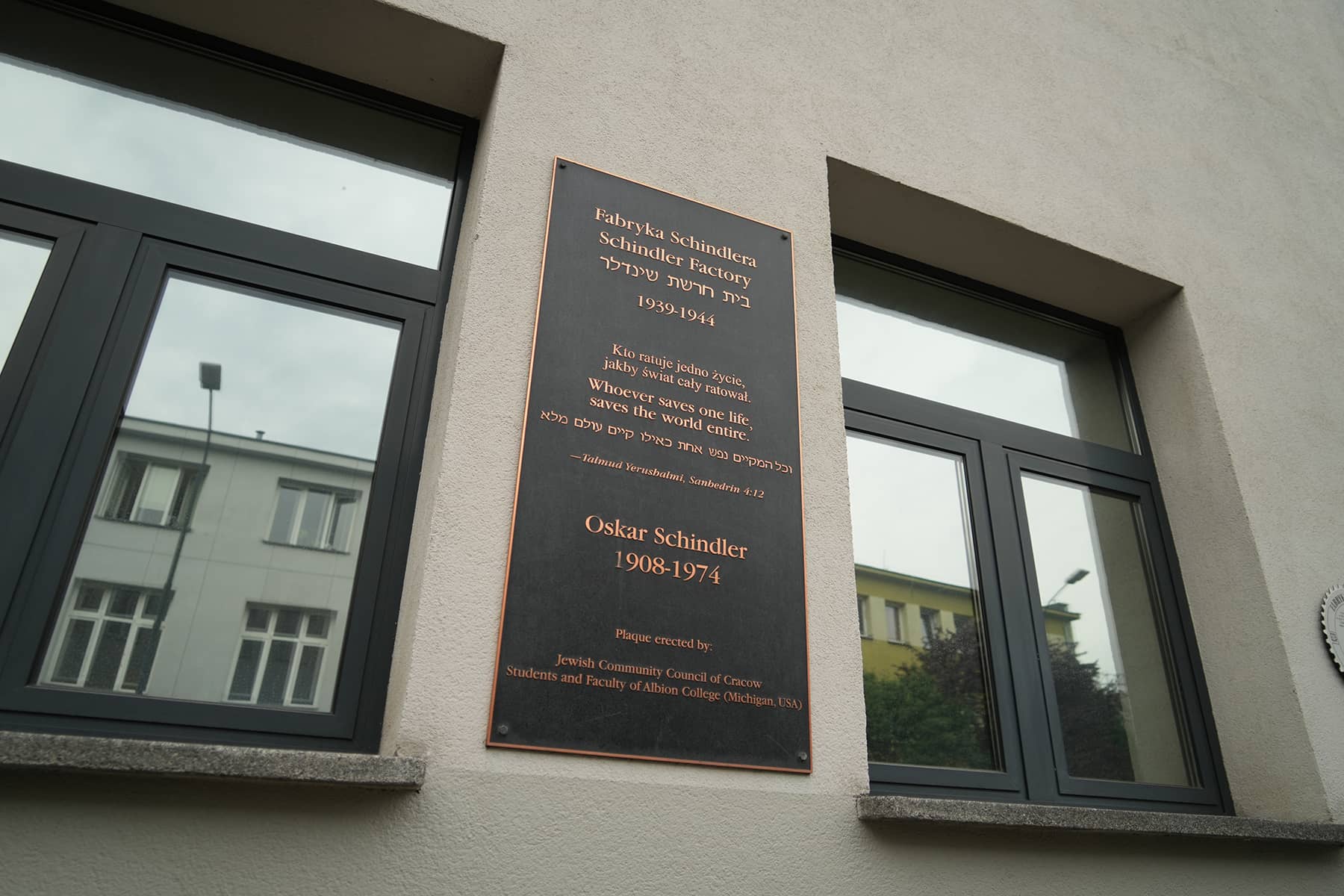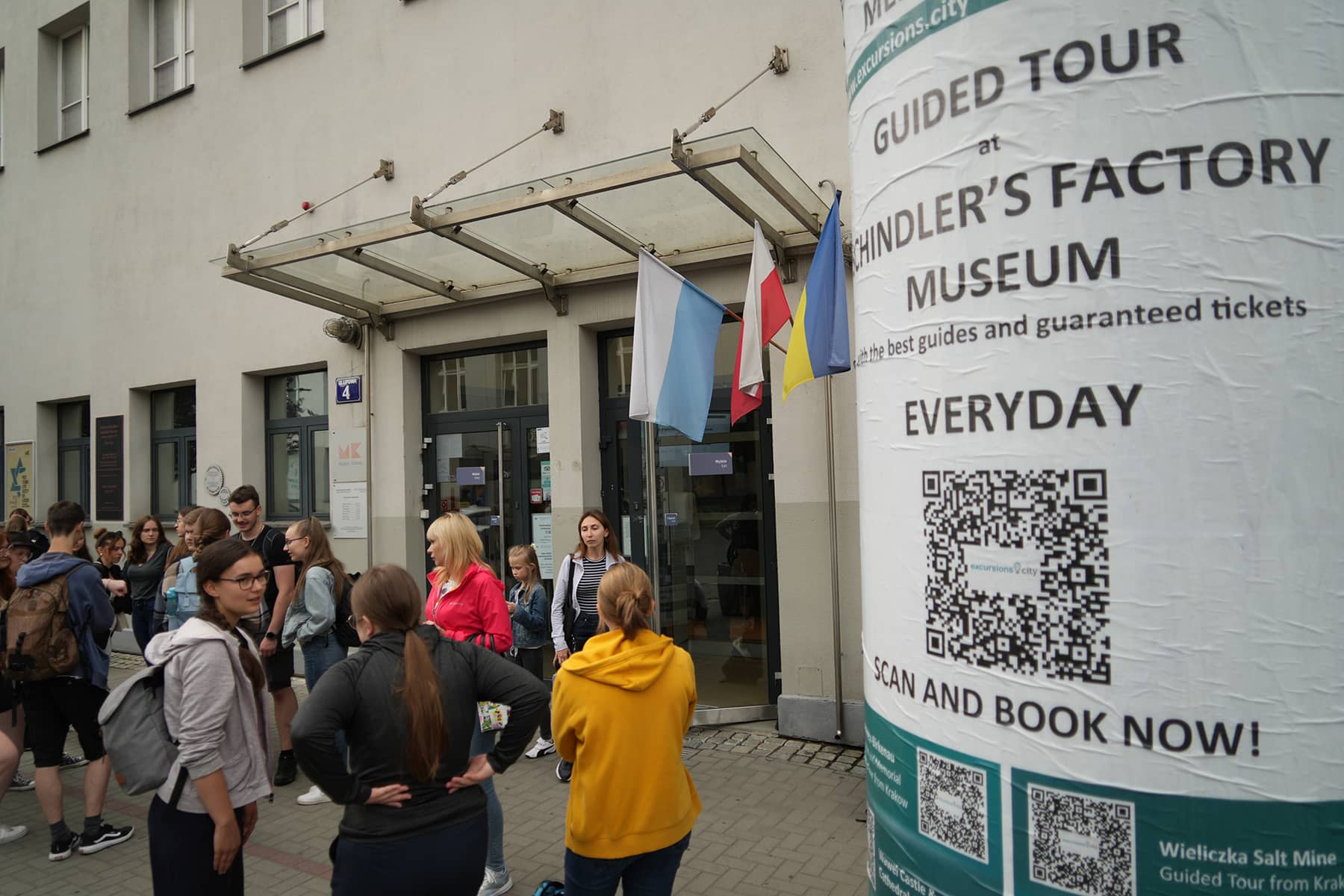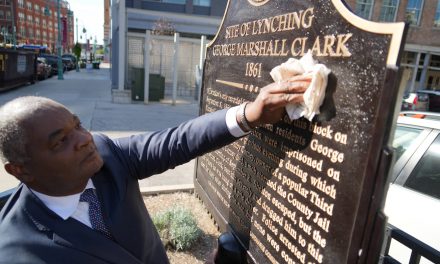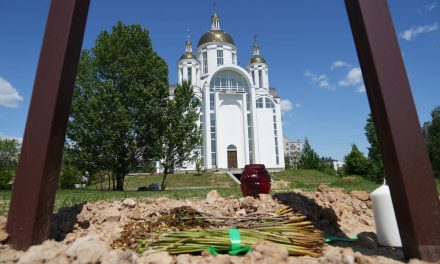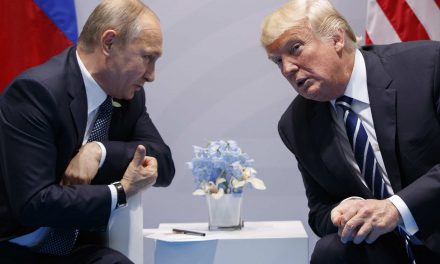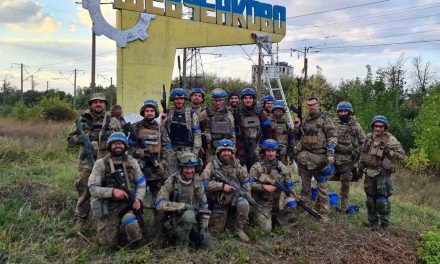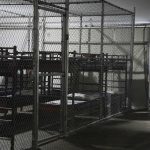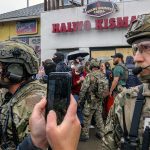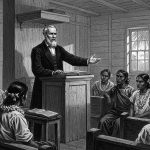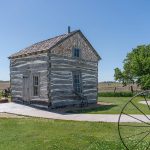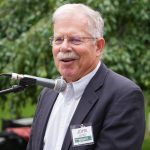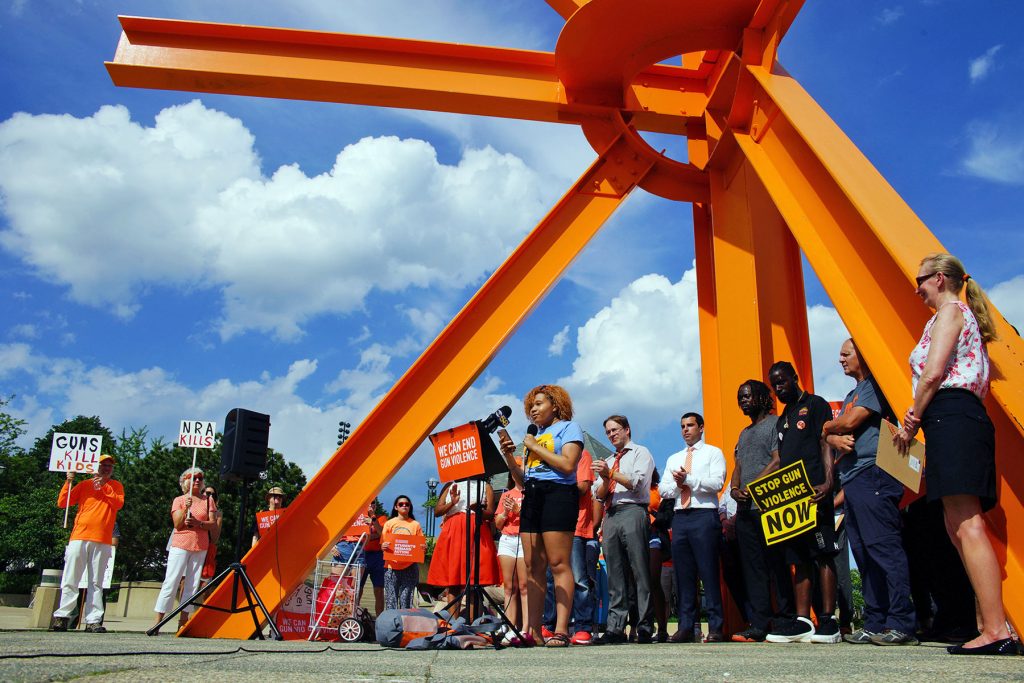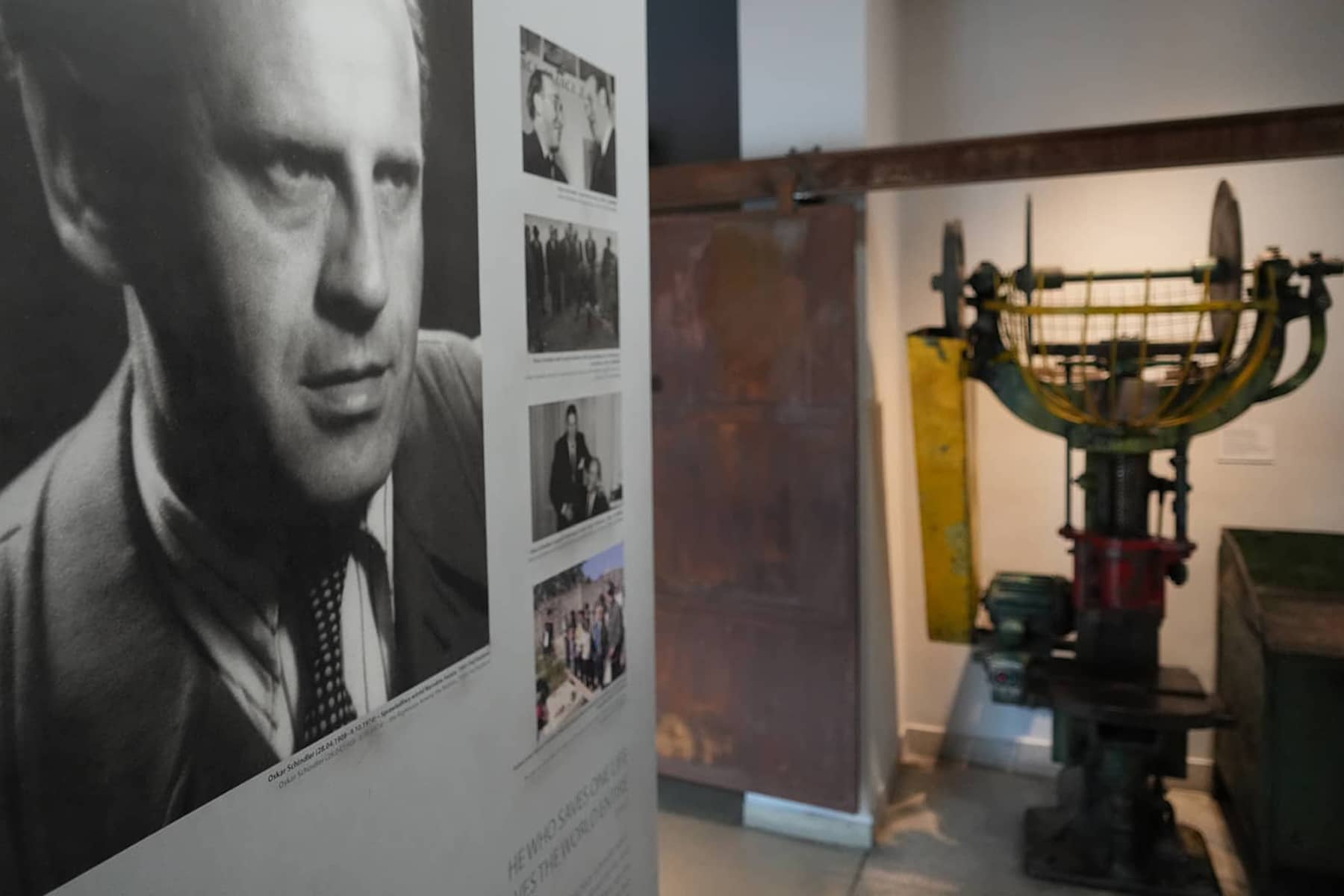
I have spent my life only hearing about places that embodied Jewish culture or history, like Jerusalem after Israel became a Jewish state or Kraków when the city’s name was synonymous with Nazi concentration camps. Within the past year, I have visited both locations for the first time in my life.
While planning the logistics for my first photojournalism assignment to Milwaukee’s Sister City of Irpin after its liberation from Russian occupation, I had two routes from Poland to consider. No commercial airlines were allowed to fly into Ukraine, so I would have to land in either Warsaw or Kraków and then travel by land.
As the capital of Poland, Warsaw was an appealing option. But Kraków was a place that I had heard about for as long as I can remember. Ultimately, my choice was dictated because of the best route to Lviv. Kraków was the better option.
I had the ambitious idea to set aside a day at the end of my assignment in Ukraine to stay longer in Kraków, so I could visit the Auschwitz-Birkenau concentration camp. But I later prioritized spending that extra time in Ukraine.
For my second assignment, embedded with a delegation from the Milwaukee-based humanitarian organization Friends of Be an Angel, I would be spending more than double my previous time in Ukraine. The approach to travel was also divided into stages, instead of my straight-in “non-stop” approach which allowed me to do more in less time.
That afforded me to consider an Auschwitz visit at the beginning or end of the new journey, since I would be in Poland for a day coming and going. After researching Auschwitz, I understood that arriving in June and leaving in July would put me in the middle of the prime tourist season.
For time and sensibilities, I abandoned the idea to attempt a visit before crossing into Ukraine. There was no quick way in and out of visiting a death camp, and the idea of being jostled around by throngs of tourists was not the solemn mood I wanted as my first impression.
If I had time after I left Ukraine, maybe an opportunity then would be better. Taking a guided tour of Auschwitz is actually hard for me to fathom, listening to someone explain details or tell stories. Every inch of that ground was soaked in blood. I have watched documentaries about it my entire life. What more can I learn? History books are for details, visits are for experiences.
That sounds very glib, and since I took a tour I mean no disrespect. But in my research, I did read several reviews that were critical of the crowds and the clogged flow of tours. So my imagination has some confirmation in real experiences.
I just feel, for me personally, that I need to approach that kind of space as alone as possible. I need time to contemplate and listen to my heart, not a scripted narrative talking about events on a timeline. I want to commune with the ghosts and not be rushed, because I have to follow a flag so everyone gets back on the bus before lunch.
I am a photojournalist, so by my nature I see the world differently. I do not begrudge others for how they travel, I just prefer to go at my own pace at a place where so many innocent people were tortured to death.
Ultimately, the idea to visit Auschwitz would have to wait for another time, or perhaps never. Because I was injured during my assignment in Ukraine, and my body was subjected to an incredible amount of wear and tear from taking photos for nearly 16 hours each day for almost three weeks, the last thing I wanted to do was push myself too far right at the end of the trip before the final stage when I returned home to Milwaukee.
At the same time, I was unwilling to just sit in a Kraków hotel room until it was time to leave for the airport. For this trip, I flew Polish Airlines (LOT). It was a direct flight from Chicago to Kraków. I cannot express what a joy it is to fly nonstop. I have connection fatigue from going through airport security so often this year.
Unfortunately, Polish Airlines does not fly nonstop every day. When I returned to Poland after leaving Ukraine, I would not have enough time to catch the direct flight that day. Plus, crossing the border is always uncertain, maybe 2 hours, maybe 6 hours. Who needs the stress of trying to catch a flight while trying to withdraw from a war zone? I expected to book a flight the next day, staying overnight in Poland. But, there were no nonstop flights to Chicago the next day, only a connection through Warsaw.
That meant I would need to stay one more night in Kraków. I dreaded making connections in Europe so much the extra day was worth it. As my assignment in Ukraine began to end, I started to consider how I would spend my time in Poland. I came to a compromise of sorts, and decided to just walked around the city.
I got out early with the sunrise, to see the city before the traffic of commuters and later tourists cluttered its historic sidewalks. Because I was taking photos of the streetcars, a young woman approached me asking if I was with the city government documenting traffic patterns.
I wandered around and at times felt like I had stepped back in time. My plan was simple – visit Kazimierz, the Former Jewish District of the city. And then maybe if time and my stamina allowed I would continue on until I reached Oskar Schindler’s Enamel Factory, which was now a museum.
Oskar Schindler, a German industrialist and a member of the Nazi Party, is credited with saving the lives of 1,200 Jews during the Holocaust. He was able to accomplish this, in part, by employing them in his enamelware and ammunitions factories in occupied Poland.
When I reached the Old Jewish Quarter, I tried to imagine it in the late 1930s. It did not take much imagination, because some scars from that era remained. I did a little research the night before about the Schindler factory, and found a website that documented all the locations that Steven Spielberg used to film his legendary 1993 film, “Schindler’s List.” If I had more time, or at least felt in better condition, using the Where was Schindler’s List Filmed website would have been a nice roadmap.
But I also knew that trying to reach a series of landmarks would change the journey to reach them. On a voyage of discovery, part of the purpose is the process – not the destination.
As luck and fate and simple logistics would have it, I pretty much followed the route by foot that the Schindlerjuden – the Schindler Jews – would have walked from the Kraków ghetto to work each day. It was a powerful experience to find myself standing at the gates of Schindler’s enamelware factory. The location had never been on my list of places to visit, and it had only been recommended to me a few days before. Yet, that was exactly where my journey had taken me.
I did miss many landmarks along the way. But I learned to navigate the area on my own and found many interesting things in the short time I had. Eventually, my knees and ankles felt like I was grinding broken glass and I had to take an Uber back to my hotel.
In an interview earlier this year, when Spielberg was talking about the 30th anniversary of “Schindler’s List,” he shared one of his motivations for making the film and the way he decided it should end.
“Holocaust denial was on the rise again, that was the entire reason I made the movie in 1993. That ending was a way to verify that everything in the movie was true.” – Steven Spielberg
The collection of photos presented here is my visual journal from walking the streets of Kraków over two non-consecutive days, and capturing the moments I observed along the way. It was a time of quiet reflection for me, after spending weeks in Ukraine.
As both the end of my assignment to report on the war, and the end of my editorial series about the assignment, it is only fitting to close with the sights contained in these images.
Series: Return to Ukraine
- Return to Ukraine: A trauma loop of travel from Milwaukee to a country still at war a year later
- From Weddings to War: How Kostiantyn and Vlada Liberov photograph Ukraine's daily horrors
- Being Friends of Angels: The Milwaukee nonprofit saving lives and offering hope in Ukraine
- Mayors of Milwaukee and Irpin expand Sister City cooperation after visit by nonprofit delegation
- Interview with Tom Barrett: U.S. Ambassador to Luxembourg reflects on forging ties with Irpin
- Wisconsin Ukrainians host annual fundraising picnic to support homeland on 500th day of war
- Advanced Wireless to donate 840 access points to rebuild Irpin's citywide Wi-Fi network
- Children of Irpin begin planning mural for Mitchell Airport to showcase Sister City friendship
- Irpin is not forgotten: Residents thank Milwaukee Independent for reporting on their "Hero City"
- Milwaukee photojournalist on assignment in Kyiv during July 2 Russian drone strike targeting civilians
- Russian cruise missile attack kills residents far from front lines in Western Ukraine city of Lviv
- Ukraine arrests man accused of directing Russian ballistic missile strike on Kramatorsk pizza parlor
- Milwaukee offers Ukrainian refugee family life-saving treatment for son's genetic condition
- Nikita Pirnach: Irpin student hopes to help his country after finishing education in Milwaukee
- Sick children wait for overseas medical treatments as a new generation is born in Ukraine during war
- Iryna Suslova: The superwoman saving Ukrainian children abducted by Russia
- How a group of Ukrainian mothers, wives, and daughters are distributing vital humanitarian aid
- Freeing Freddie: Educational program aims to reduce PTSD for Ukraine's war-weary children
- The trauma of living: When being killed is the preferred choice to being disfigured from battle
- President Zelenskyy offers gratitude and awards to wounded soldiers while visiting Lviv Hospital
- Former Vice President Mike Pence visits Irpin during unannounced campaign trip to Kyiv
- Military Hospitals provide vital care for Ukrainian soldiers in need of hope and healing
- Combat surgeons pioneer advances in maxillofacial reconstruction of Ukraine's injured heroes
- Milwaukee donors cover cost of reconstructive surgery for American volunteer wounded in battle
- In their own words: Listening to the Voices of Children talk about their experiences from war
- Traumatized by War: Children of Ukraine carry on after losing parents, homes, and innocence
- Widespread Torture: U.N. report documents Russia's systematic executions of Ukrainian civilians
- Wisconsin volunteers sort and pack donated medical supplies for use in Ukraine's hospitals
- Lviv warehouse serves as vital link in medical supply chain from Milwaukee to frontlines
- Aid from Milwaukee is providing internally displaced people in Ukraine with food and clothing
- Iryna Pletnyova: How the city of Uman transformed into a hub for refugees fleeing war
- Bombs in the night: Why children in Uman are still traumatized by Russia's missile attack
- School Bunkers: When a national flag becomes a memorial to dead Ukrainian students
- Hasidic life in Uman: A journey across Ukraine to the Tomb of Rabbi Nachman of Breslov
- Tetiana Storozhko: Being a witness to the history of Roma culture in Ukraine
- Remembering Oskar Schindler: A photojournalist’s diary from the streets of Jewish Kraków
Lее Mаtz
Milwaukee Independent has reported on Russia’s brutal full-scale invasion of Ukraine since it began on February 24, 2022. In May of 2022, Milwaukee Independent was the first news organization from Wisconsin to report from Milwaukee’s Sister City of Irpin after its liberation. That work has since been recognized with several awards for journalistic excellence. Between late June and early July of 2023, Milwaukee Independent staff returned to Ukraine for a second assignment to report on war after almost a year. The editorial team was embedded with a Milwaukee-based nonprofit, Friends of Be an Angel, on a humanitarian aid mission across Ukraine. For several weeks, Milwaukee Independent documented the delivery of medical supplies to military and civilian hospitals, and was a witness to historic events of the war as they unfolded.
Return to Ukraine: Reports about a humanitarian mission from Milwaukee after a year of war

